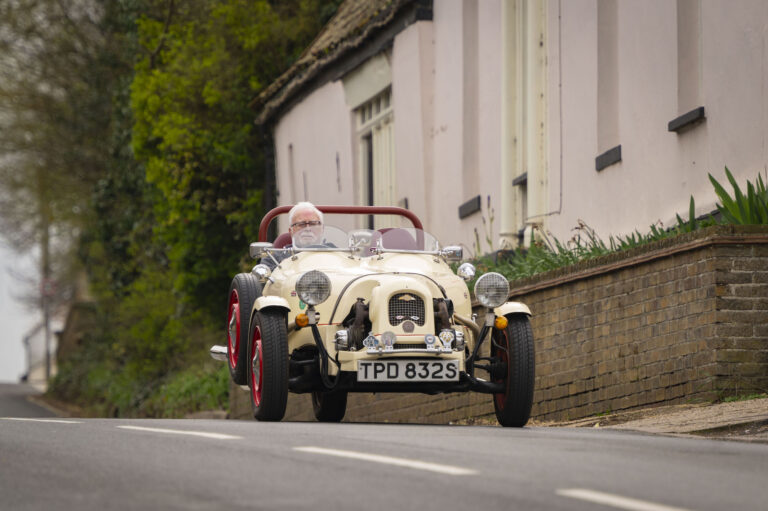The seeds of Mick Harris’s love of cars and mechanics were sown by a maverick metalwork teacher at high school in the 1960s.
With the course barely underway, Mick recalls the teacher saying: “This type of metalwork is boring, isn’t it? How about we go out and buy a car?”
“It was the sort of thing you could do then,” he says. “So he went out and bought a car from a scrapyard, a wooden-bodied Lea Francis. He said ‘let’s get rid of all of this crap wood and give it to the woodworking lot’, and we got on with the chassis and the engine.
“We got it going, and it was so interesting. That was the seed for me becoming a mechanic.”
It was also what prompted he and wife Midge to buy an old car seemingly abandoned half in and half out of a barn next to a butcher’s shop across the road from their home near the Malvern Hills.
“We went past it every day, but we had no idea what it was,” says Mick, 71. “It had no badges, it was going green, and all you could see was the back end sticking out of this half-barn.
“But I wanted to have a car to do up, because that was planted in there from school, and it could have been any car, it wouldn’t have mattered – but it had to be old.”
This dirty but grand-looking vehicle, languishing and unloved, fitted the bill, and Mick set about getting his hands on the car.
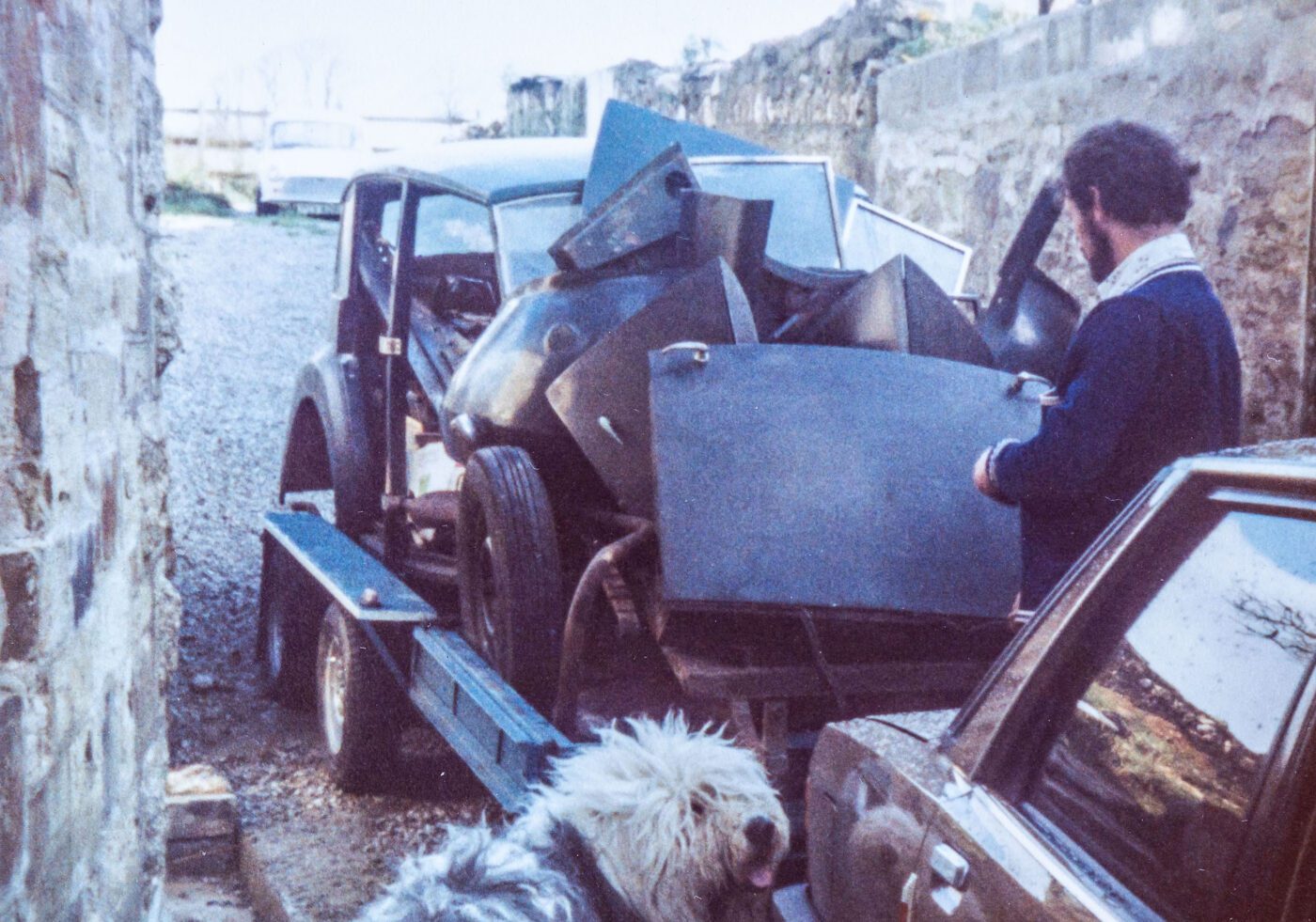
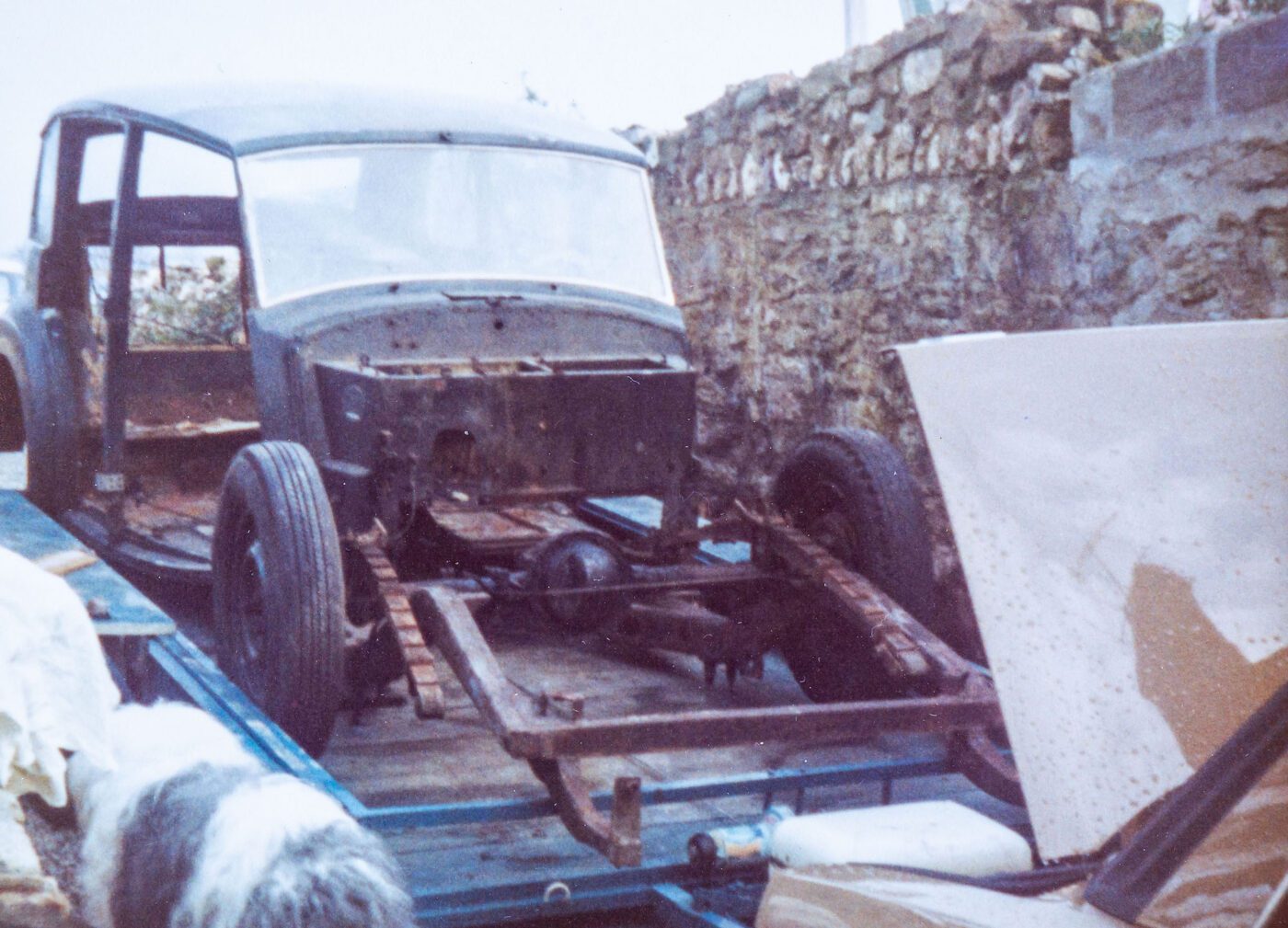
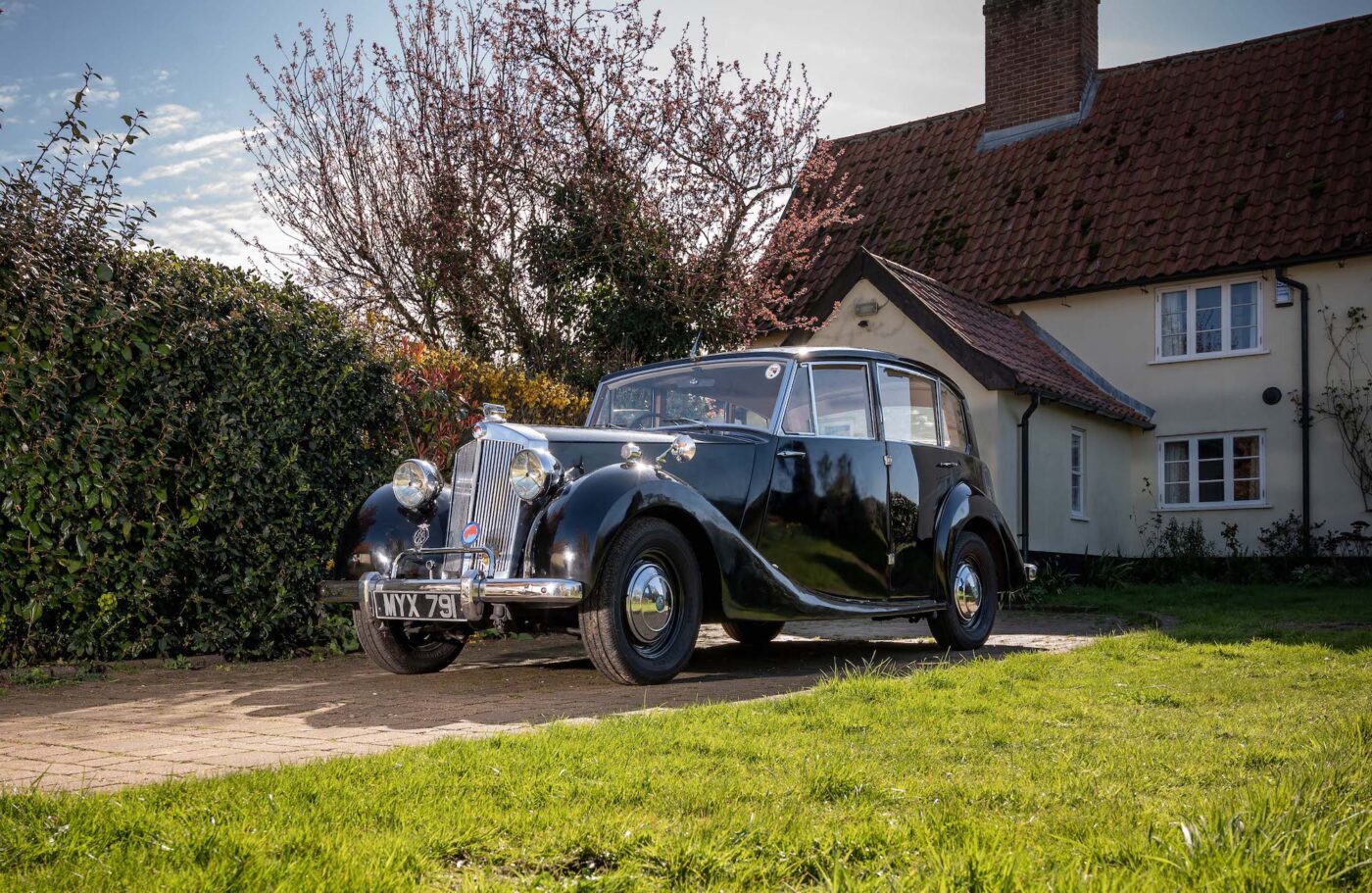
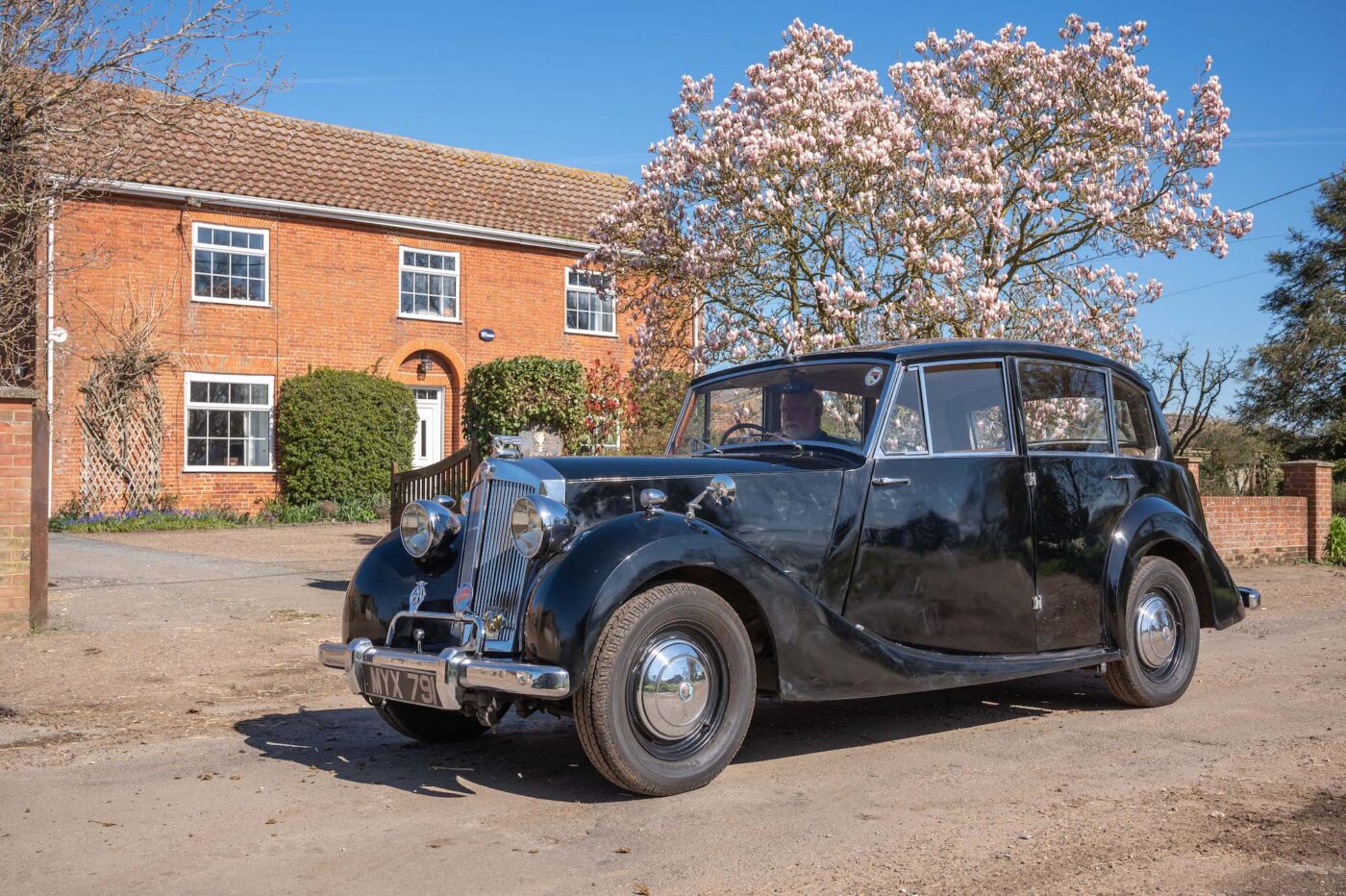
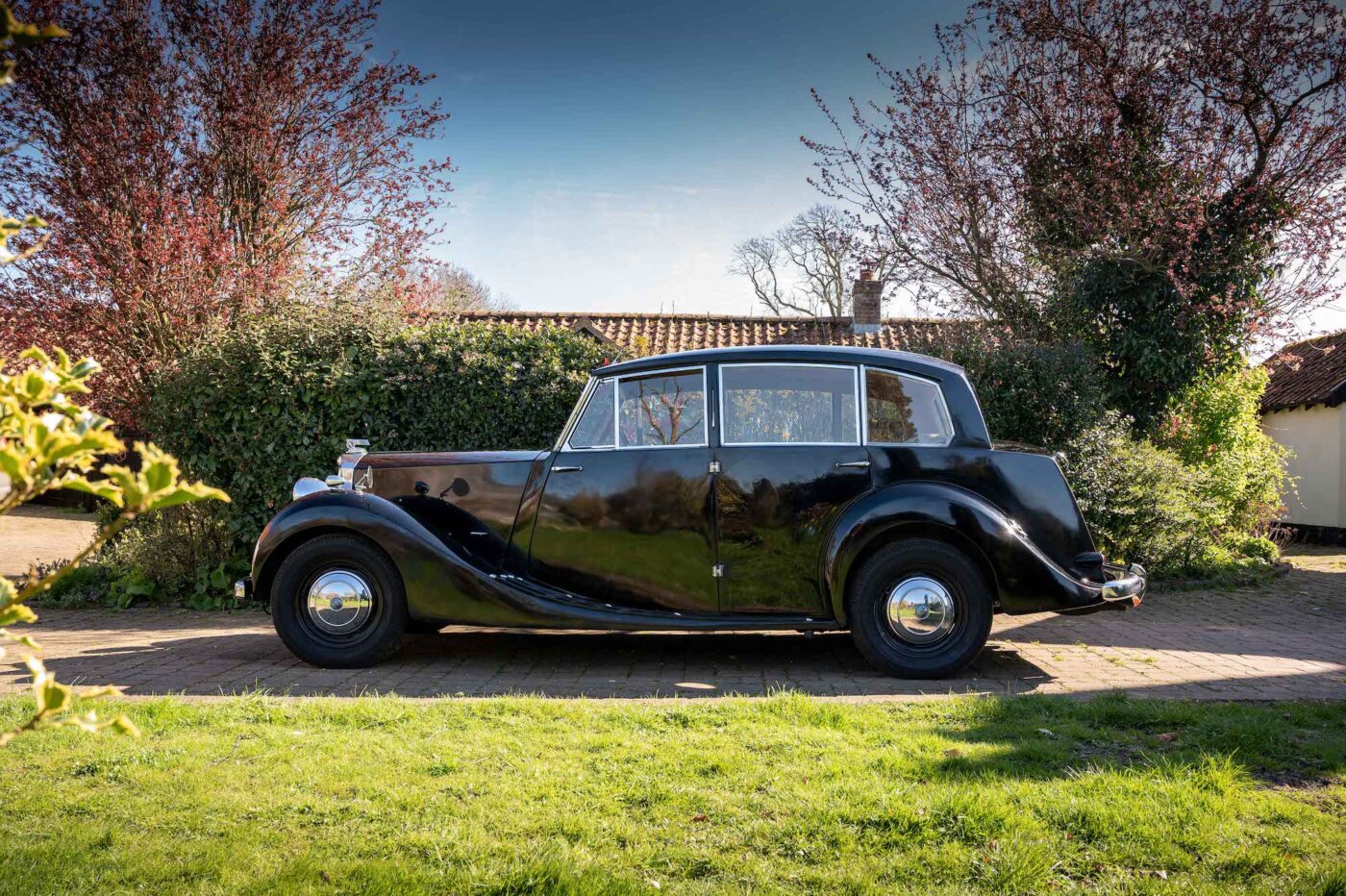
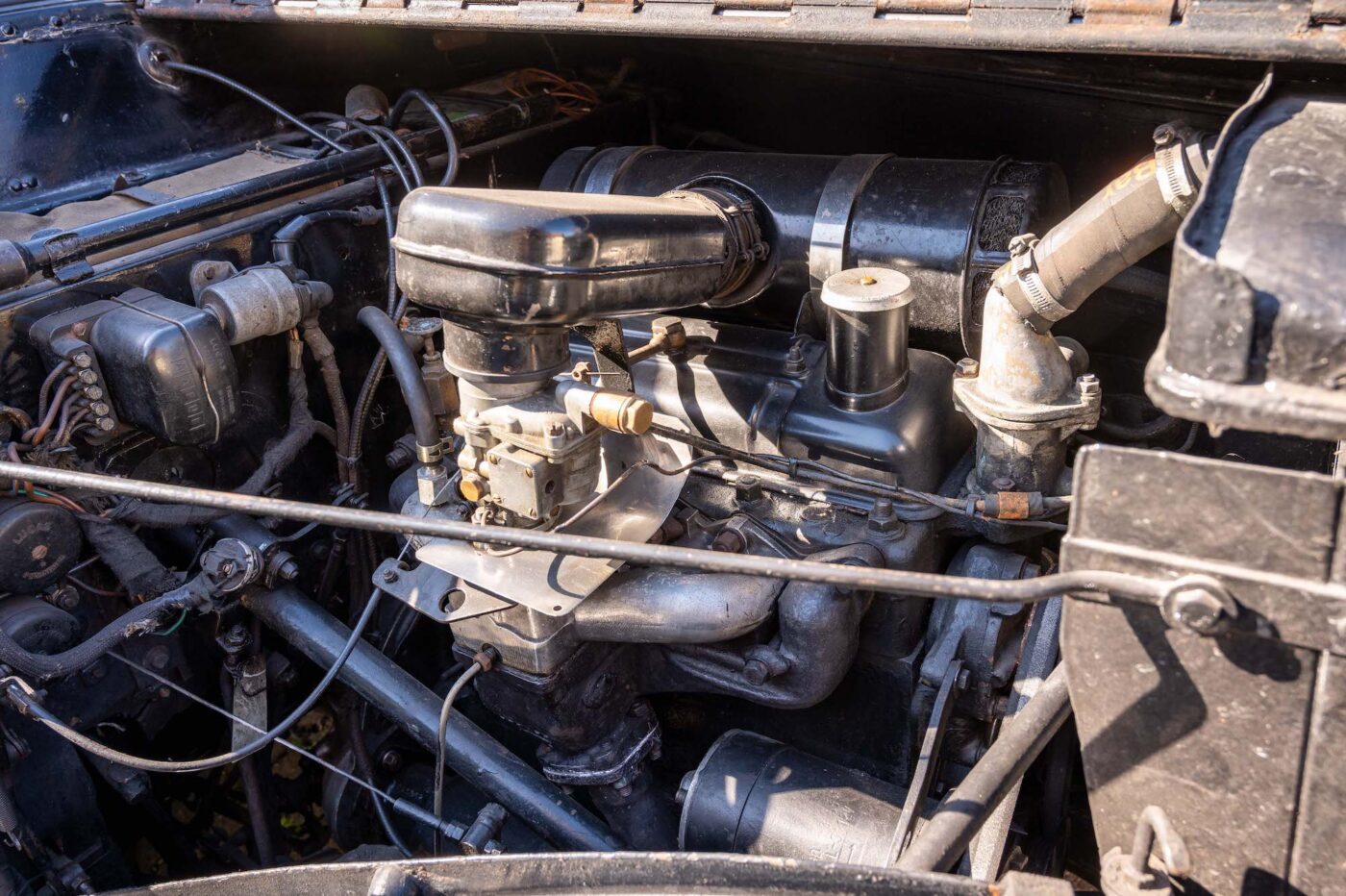
“I didn’t make initial inquiries, you don’t just go ploughing in,” he says, “but I asked the postman and he said ‘loads of people have been after the car and he won’t sell it’.
“Months later, the postman said ‘Mick, that car – the butcher’s now retiring and he’s got to get rid of it. The trouble is, he doesn’t own it – it was abandoned there for 20 plus years and that’s why he’s never been able to let it go’.
“Somebody said they’d come back for it, and they never did, so the car did actually become his by abandonment.
“I said I was interested, and we did a deal at a silly price, £60, which was a month’s mortgage payment at the time.”
That was in April, 1978, by which time Mick was working for the AA, having previously worked as a mechanic at the Midland Red bus company aged 15, a Peugeot dealership, and a seven-year stint at a local garage near his home in Alcester.
“At the AA, as they said, ‘you can’t break things that are already broken’,” he says. “You’d take things apart at the side of the road if you could and, if there were things you couldn’t fix immediately, perhaps you could keep the spare part, take it apart and see why it packed in and start to understand things a lot better. It made you a better AA man, and it suited me.”
It also gave him the perfect attitude to bring back to life this mysterious old car with running boards, Razor Edge styling, and very little in the way of interior.
READ MORE ABOUT SOME OF OUR GREATEST CLASSIC CARS WITH

A series of articles on our Cult Classics site.
Midge, who was driving a Triumph Spitfire at the time, remembers the car that “had nothing”.
“No headlights, no chrome, no documents – how were we ever going to find these things for a car we didn’t even know what it was?” she says. “We couldn’t even open the boot.”
“We did open the boot eventually, which was either seized or locked, and inside were all these bits of chrome, headlights, and the chrome radiator cap – it was a big bonus,” adds Mick. “We found some bumpers in the car itself, but they weren’t chrome so we painted them in aluminium paint to look like chrome.”
The couple were able to identify the car as a Triumph Renown, a large 2-litre saloon produced between 1949 and 1954 following the Standard Motor Company’s takeover of the Triumph marque.
Mick got the engine running in the barn, before towing the car across the road to their own driveway, where he set about recommissioning the Triumph’s brakes, putting all the brightwork back on the car, and getting it ready for the road.
“Most of the panels are aluminium, and the chassis was absolutely solid,” says Mick, taking care of the mechanicals while Midge worked on the “rubbish” interior, creating new headlining, door panels and pockets. Refurbishing the water-damaged dashboard would have to wait.
“She’s always been run on a bit of a shoestring,” she says, “and we couldn’t afford to have things upholstered.”
During the rebuild, a local forge owner who had seen the car approached Mick and said he had a three-speed gearbox with the optional overdrive from a Standard Vanguard – the Renown’s sister car.
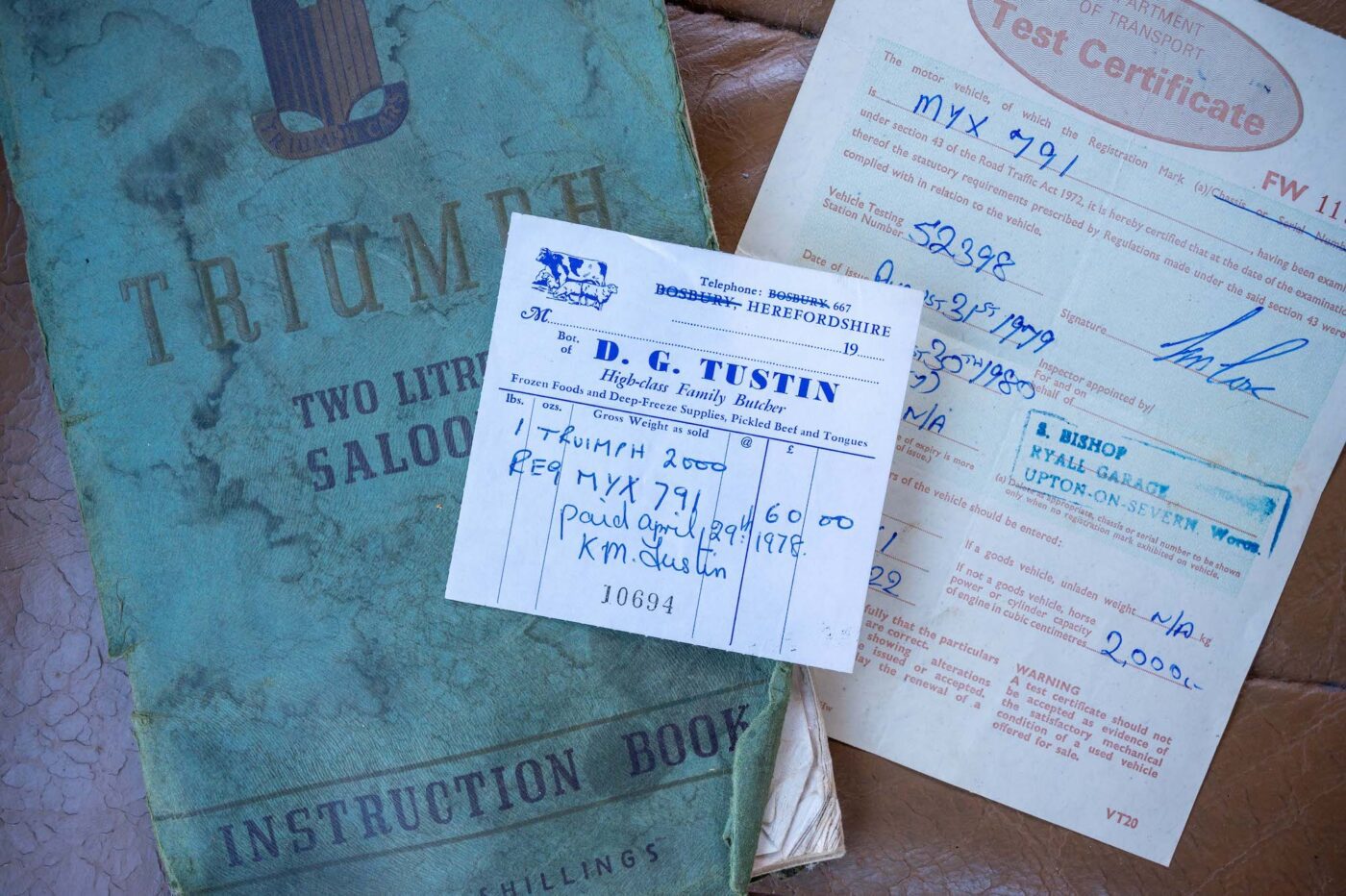
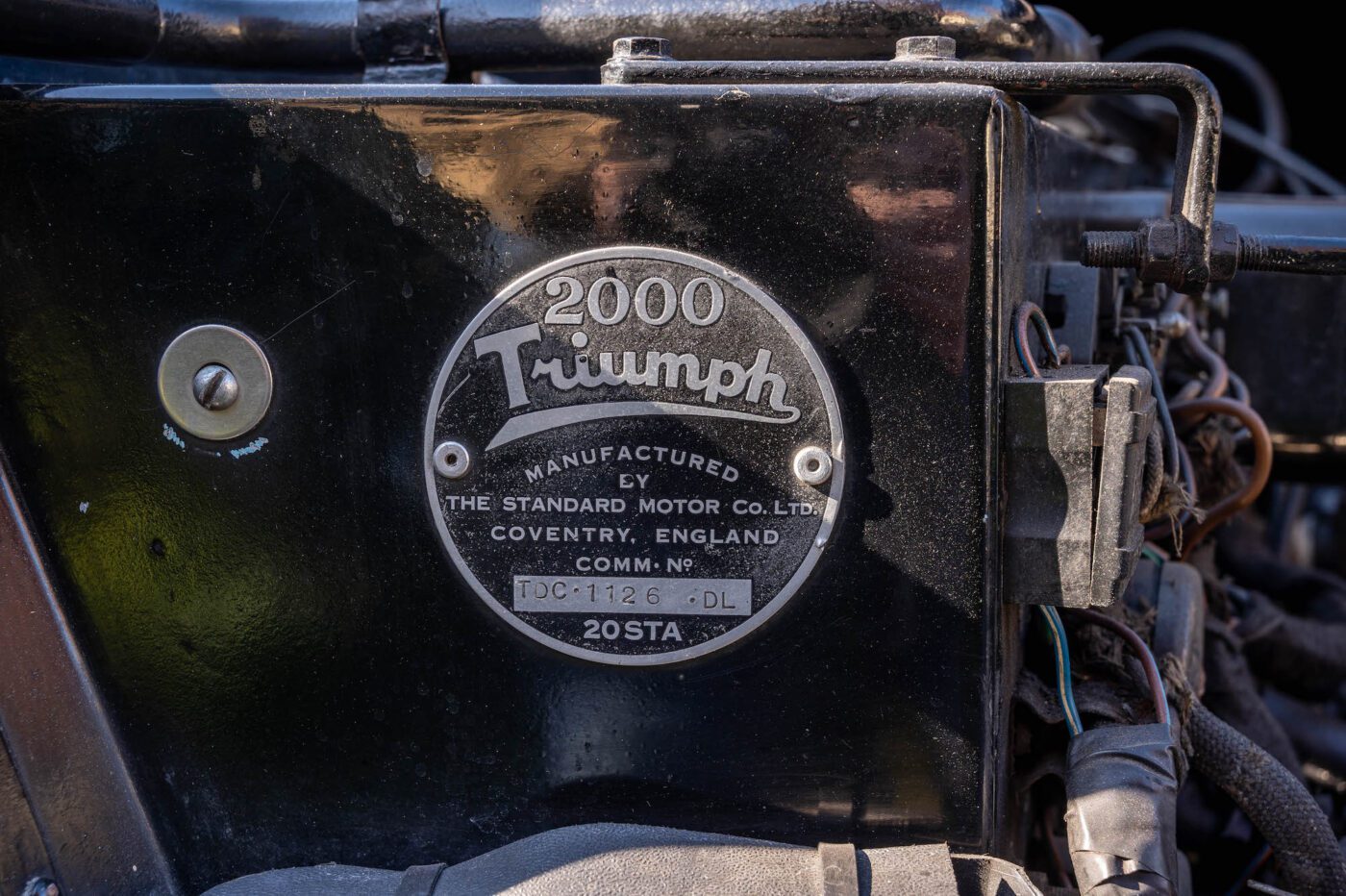
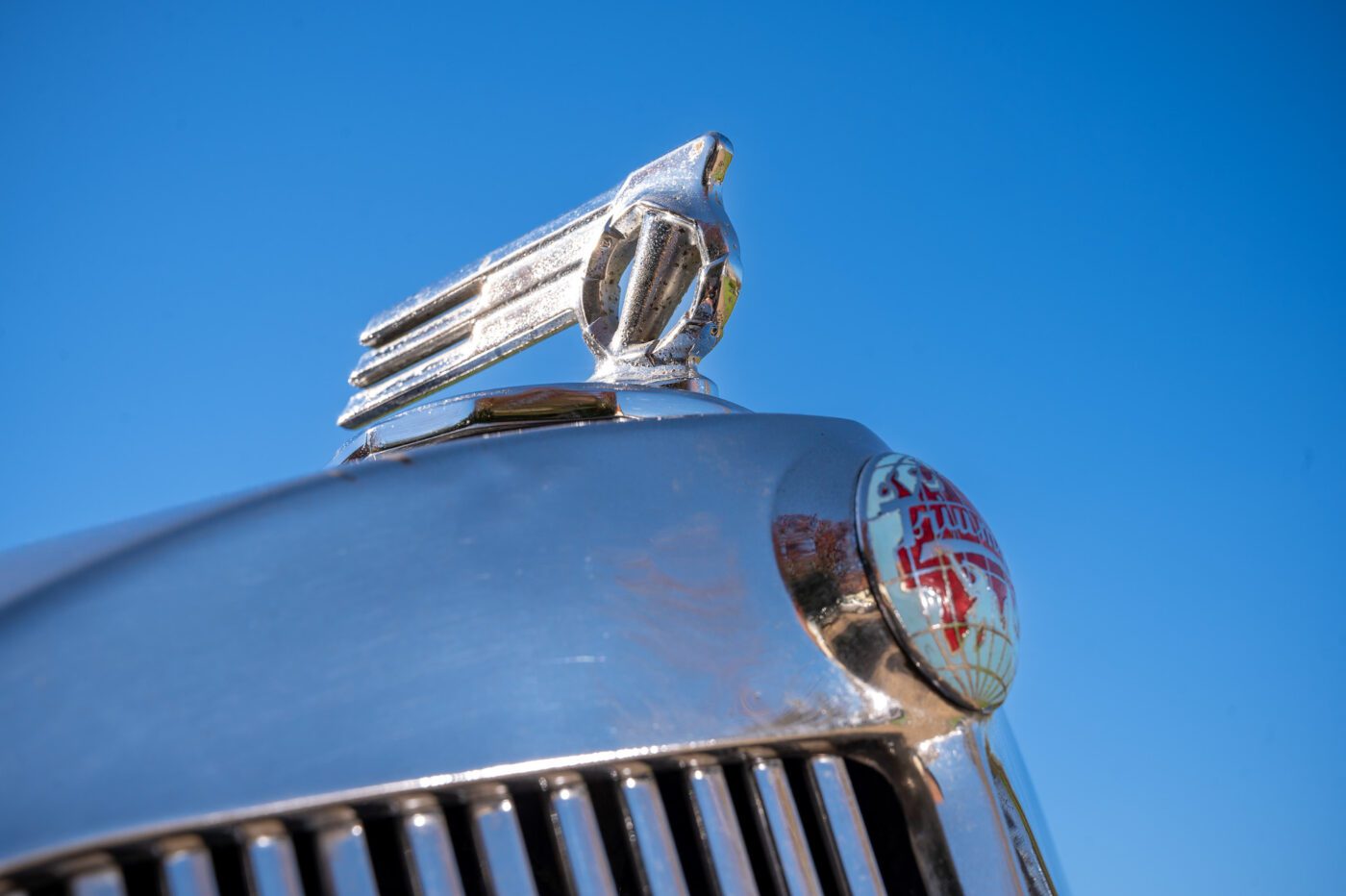
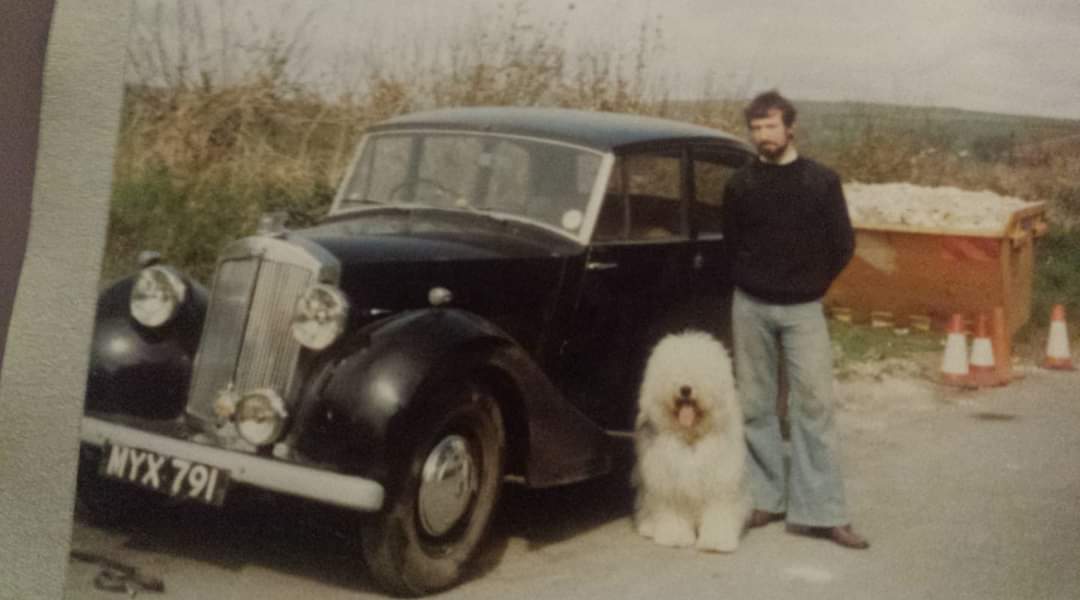
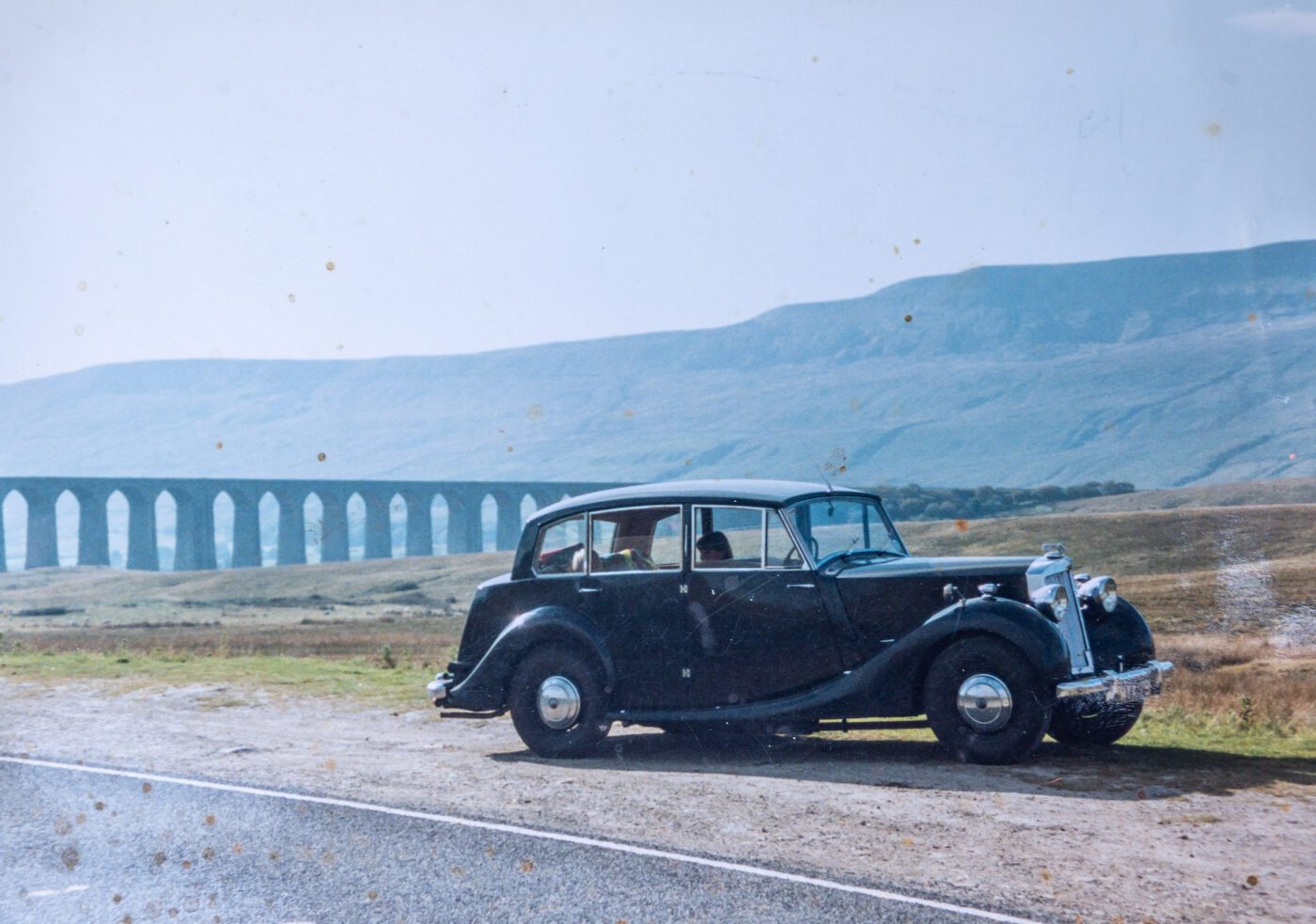
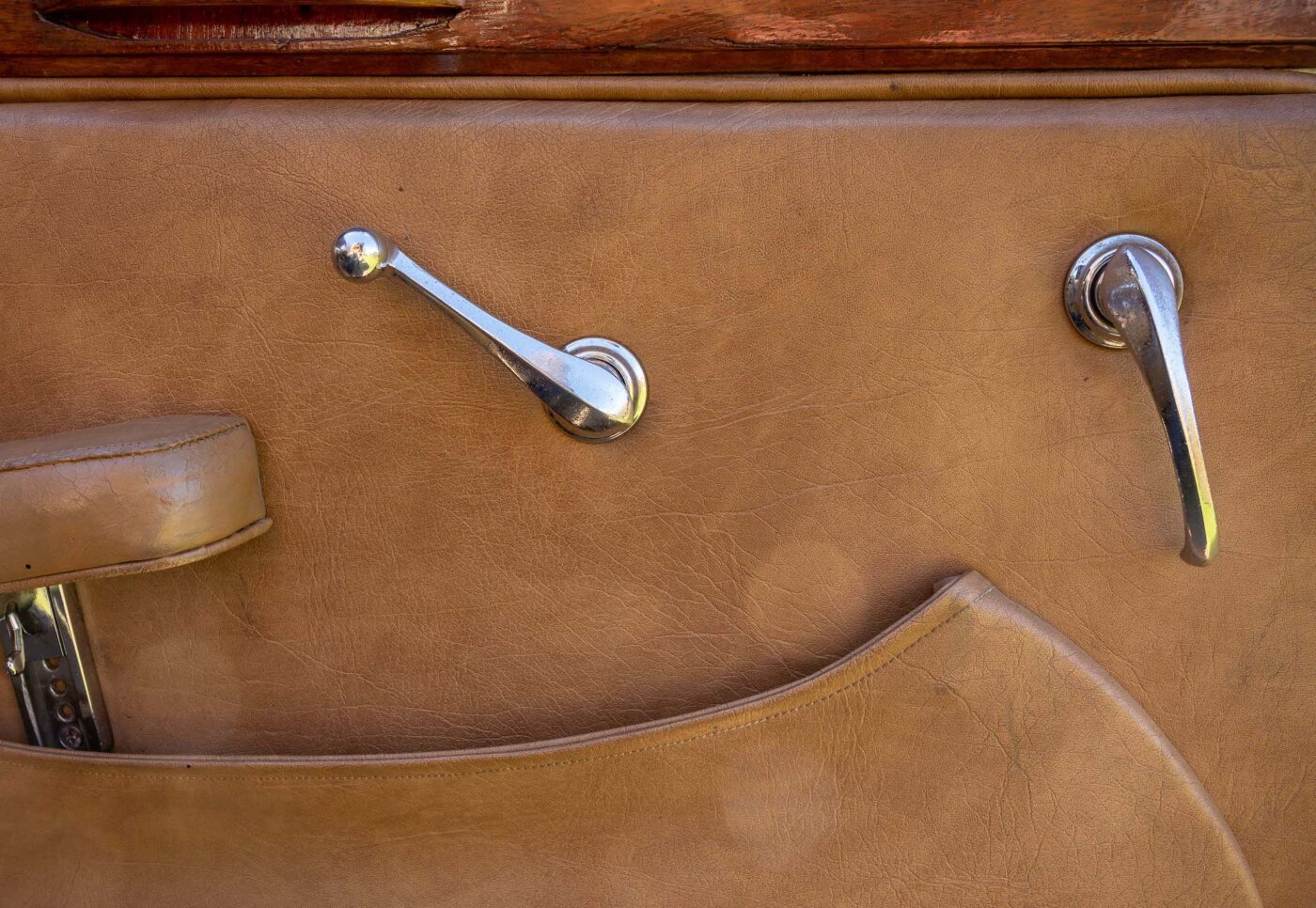
“He said I could have it for a tenner, but it didn’t fit because it was out of a diesel Vanguard,” he says. Standard was the first British car maker to offer a diesel engine as a factory option in 1954.
“So I stripped it down – I was very determined in those days – and made it fit and it worked. Overdrive was a blessing. It made a lot of difference.”
By the time the Triumph was ready to be checked by the DVLC (as it then was), Mick had decamped to Cornwall, promoted there to the rank of Sergeant by the AA, leaving Midge to complete the registration paperwork required because the car had been off the road for so long and lacked any documents.
“They said ‘what year do you think it is?’ and I said 1951 because it’s the year I was born,” laughs Mick, “although we found out later from Beaulieu that it was a later one, a TDC, probably from 1954, but I wasn’t going to change it.”
The TDC used the longer wheelbase from the limousine version, and is distinguished from the earlier cars by its wider rear window and push-button door handles, both evident in our photographs.
After about a year, the car was ready for its maiden voyage, and it was quite a daunting one.
With Mick in Cornwall, it was left to Midge to pilot the Triumph the 200 miles to Bodmin once she had finished her nursing training in Worcester and the couple’s house had been sold.
81.5% of customers could get a cheaper quote over the phone
Protect your car with tailor-made classic car insurance, including agreed value cover and discounts for limited mileage and owners club discounts

“It was heavy, and I’d never driven a column gear change before,” she says, with the family cat also on board. “I got to within about 40 miles when it broke down in Okehampton. At the time there was no Okehampton bypass, so I’d driven through the middle and there’s a big steep hill on the other side. I got halfway up it.”
Thankfully, it was only a broken fan belt, fixed by the AA and Midge was able to carry on.
The Spitfire also followed the couple to Cornwall, but its regular need for welding saw the Renown pressed into service as Midge’s daily driver for several months, making the 50-mile round trip from Bodmin to Truro where she worked as an A&E nurse.
“It was fine because I got used to it and I was stronger I think, because she’s obviously not got power steering,” she says. “Luckily, it was an outside car park at work, because the only time I had trouble was when I took her into a multi-storey car park in St Austell.”
The tight turns, designed for modern cars with much better turning circles, caused something of a headache.
“As I went up, I couldn’t get round the loop to get to the next level, so I had to get all the cars to back up behind me,” she remembers. “After that first bend they knew by then not to get too close, but I never went into a multi-storey again.”
It wasn’t long before the steering box gave up the ghost entirely, Midge finding herself unable to turn into the lane where they lived on her way home from work.
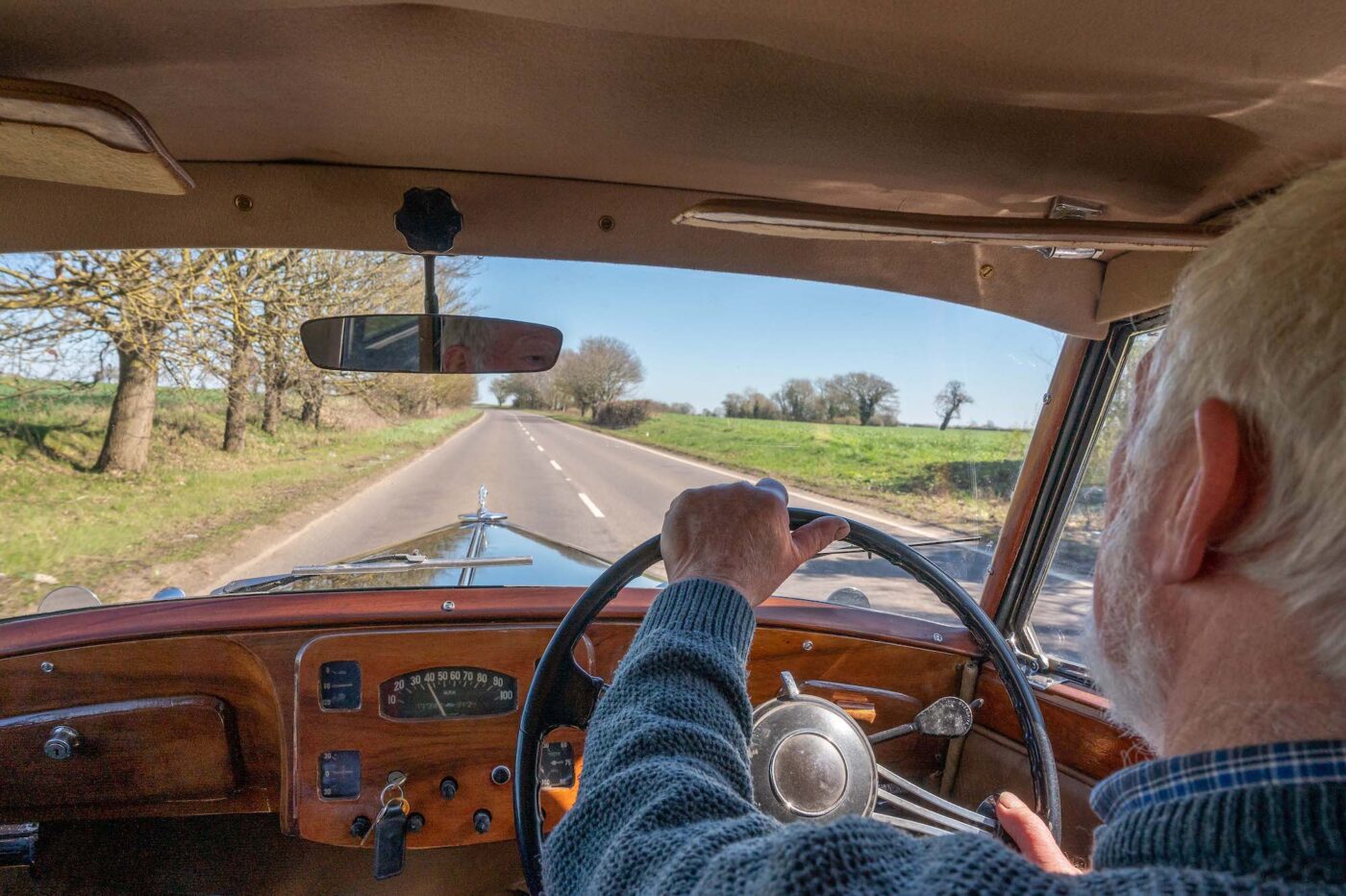
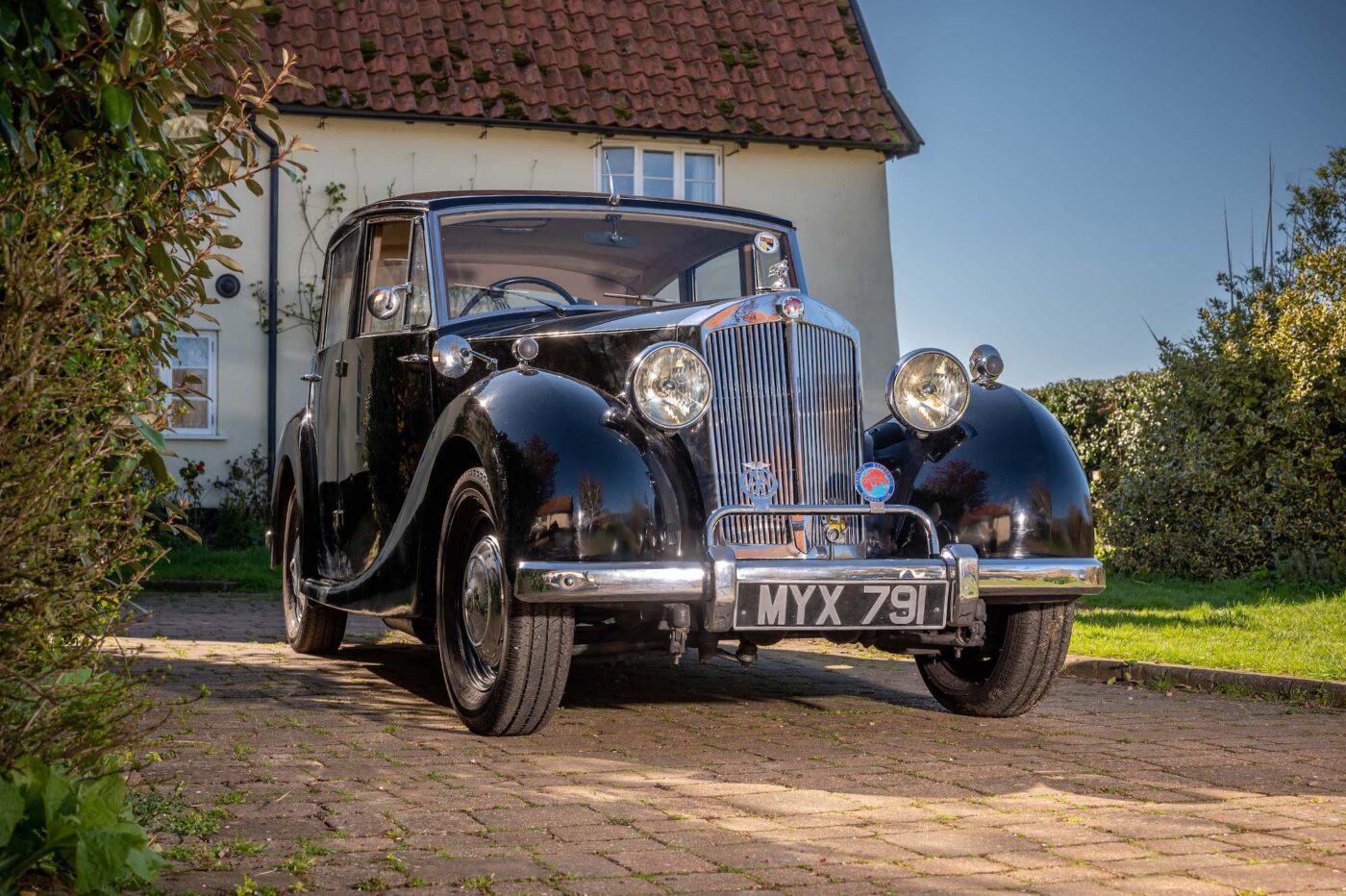
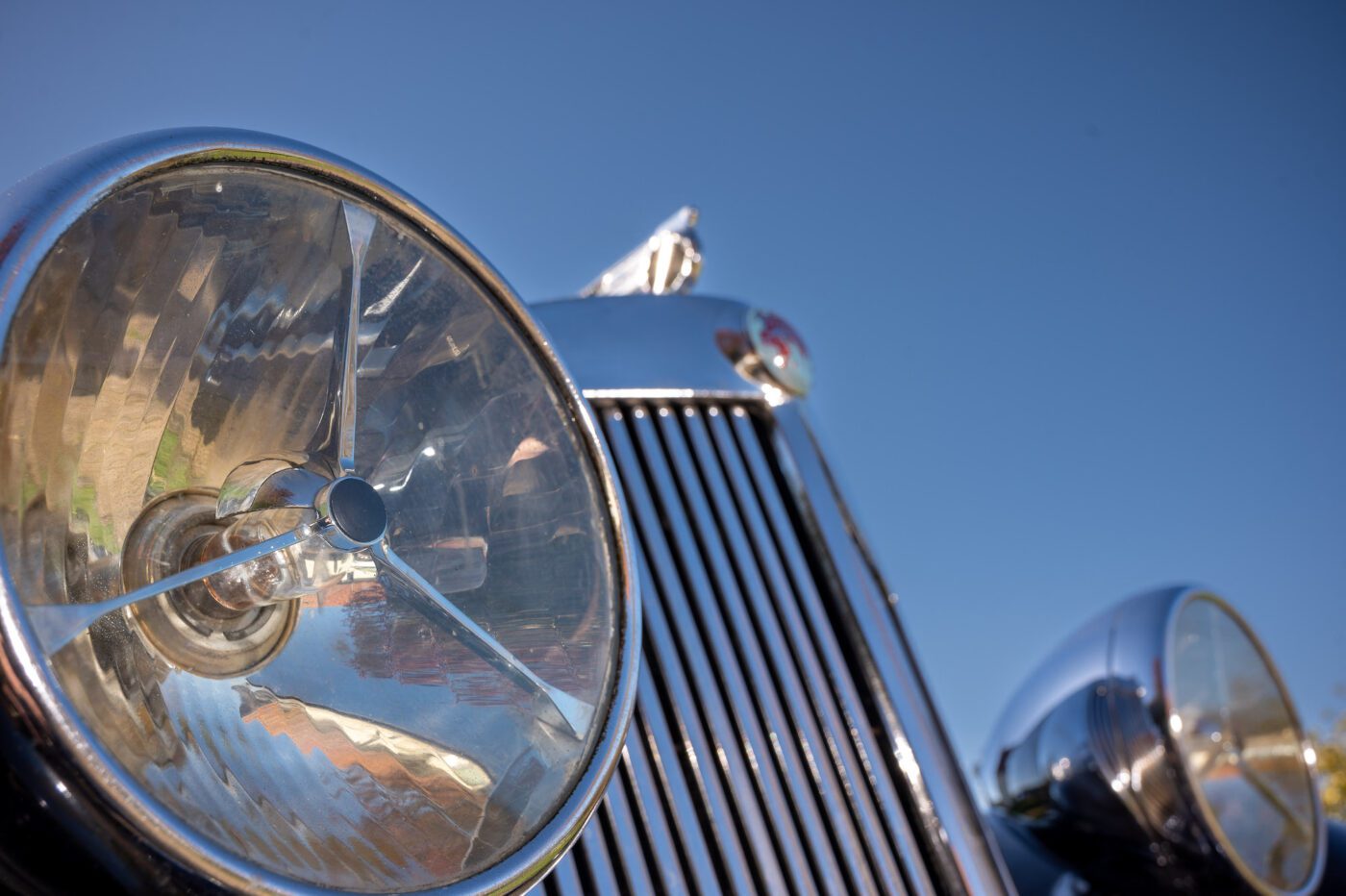
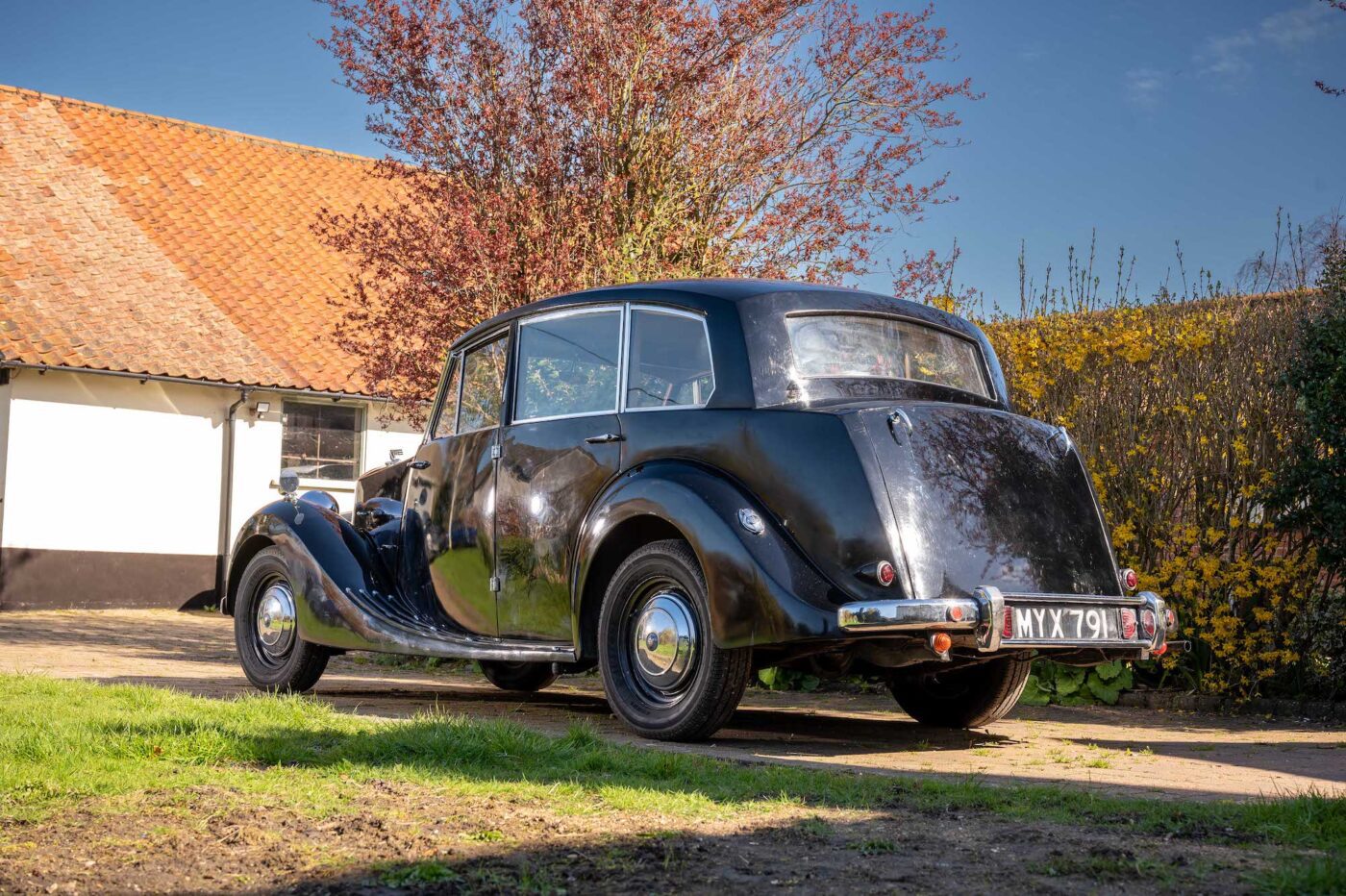
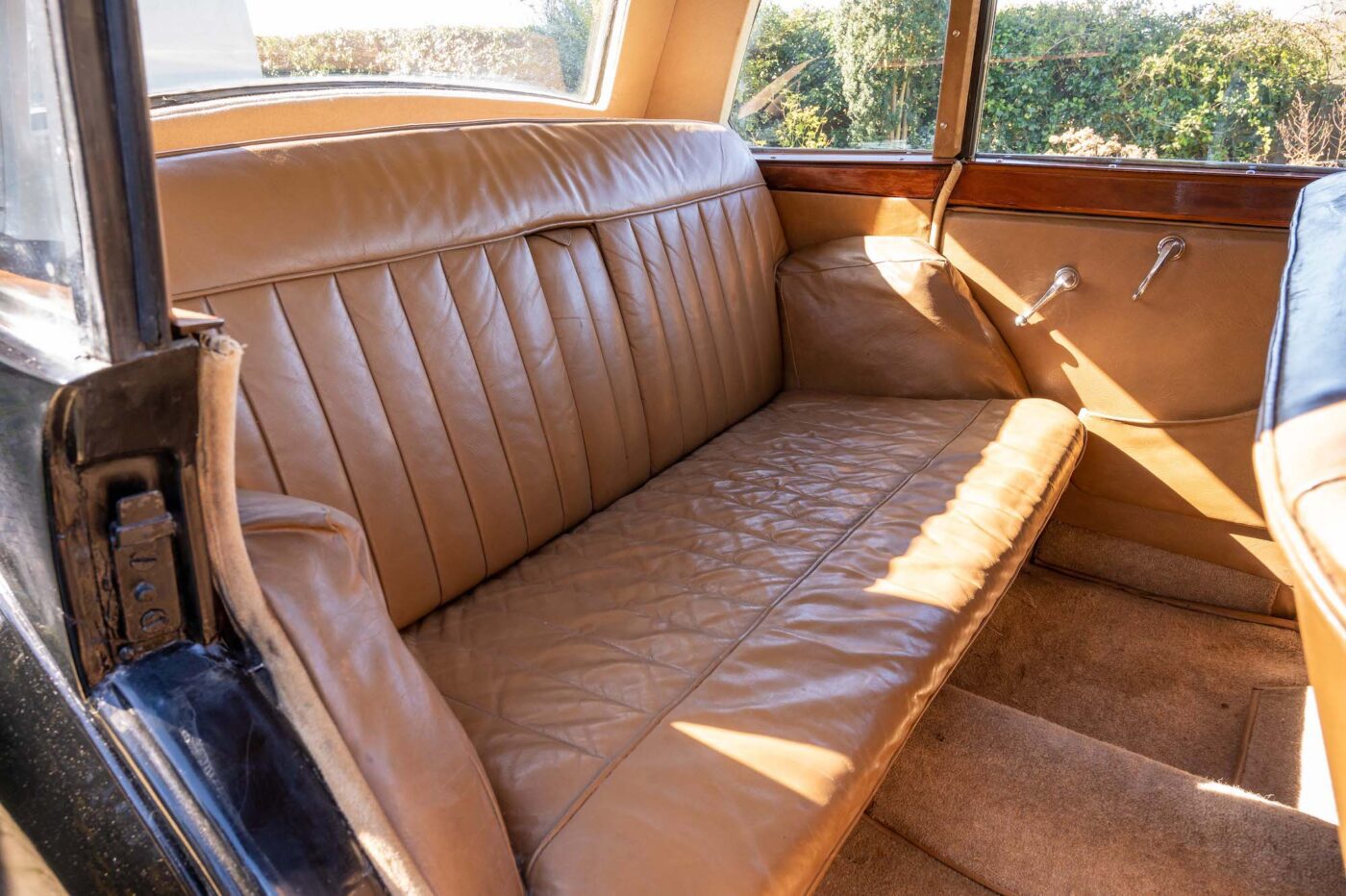
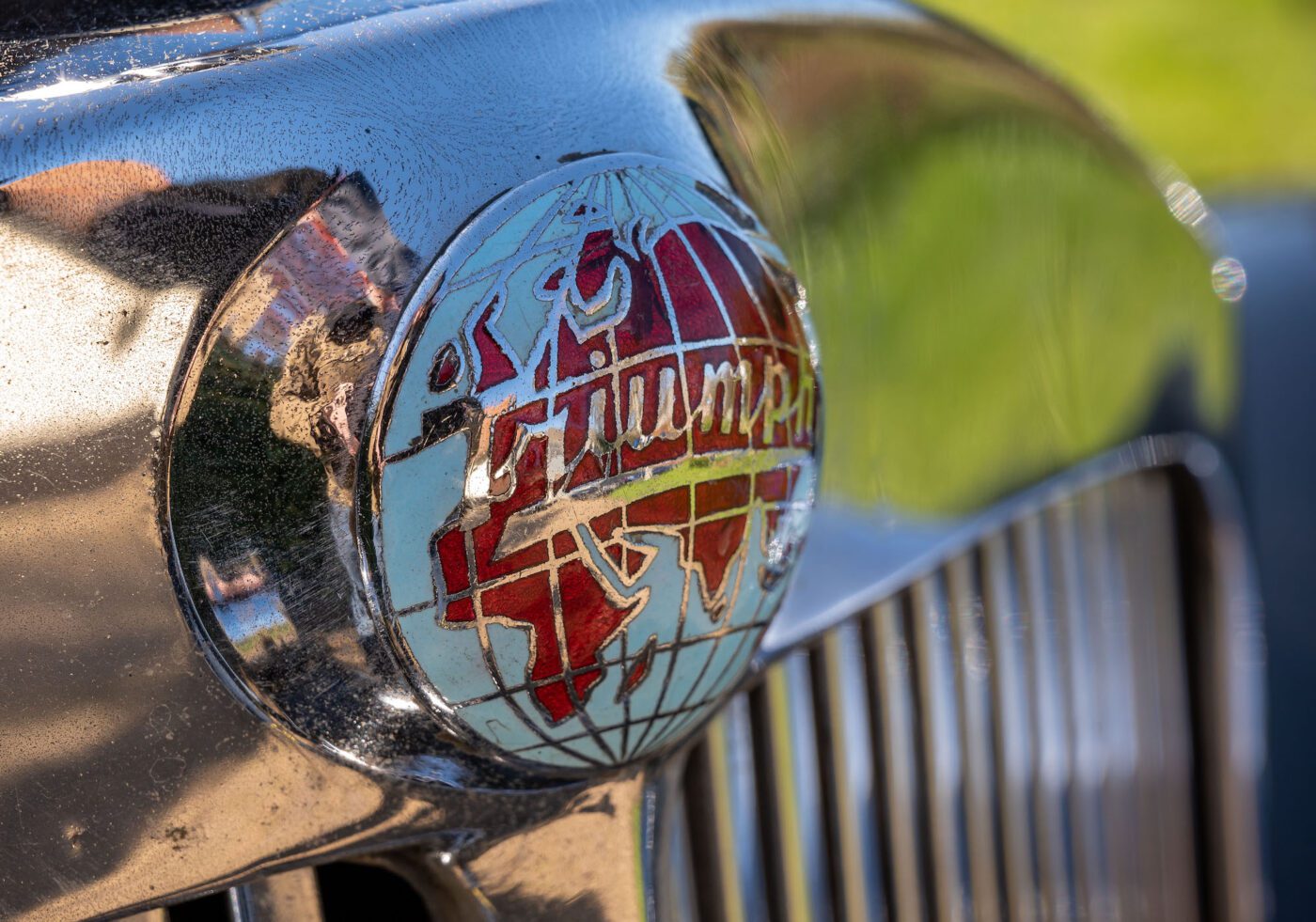
“We found someone in London under the Arches, who had bought a load of Standard Vanguard stuff from the RAF, and they did steering boxes,” says Mick, “but it was a good couple of years before we could afford to have it done, because we had children then.
“I then stripped the car down, got the panels sorted and painted it, and also bought another Renown from Maidenhead for £95.
“I got the best bits together to make one car. I was always going to do the other one, but sold it to north Devon and it became a wedding car.”
Painting the car proved less than straightforward.
“It’s been painted several times and once, back in the early 1980s, was the most disappointing thing in my life,” says Mick. “I painted it in the shed with cellulose paint and with a ‘Jumbo’ compressor – a tiny little thing! – and a gravity fed gun. It looked glorious, but I came back out a bit later with a cup of coffee and it had all gone matt.
“I was in tears, because it looked so good and then it didn’t. I went and spoke to someone and he said ‘you fool, it was too damp in the atmosphere’.
READ MORE ABOUT SOME OF OUR GREATEST CLASSIC CARS WITH

A series of articles on our Cult Classics site.
“I had no idea – I’d never done painting before. But he said ‘wait until it’s nice and dry and do a trick – give it a light coat with neat thinners and it’ll amaze you’. So when it was dry, I painted it with thinners and it came back, and I thought ‘wow’.”
The rotten dashboard was restored when Mick found an old wardrobe that had been discarded in a pit.
“I drove past this pit where people dumped all kinds of stuff, saw this wardrobe and thought ‘hang on a minute, that’s my dash’,” he laughs. “It had been in the rain anyway, and by soaking it you could peel off the veneer, which then stayed on just one layer of ply. I found I could bend it without breaking it and attach it to the dashboard.”
Another improvement was to switch from cross-ply tyres to radials, which cured the car’s tendency to have “a mind of its own”, even though it made it “very heavy to manoeuvre”.
“When you’re on the road it’s lovely, and the steering is much less awkward,” adds Mick.
A backward step, however, was a return to the original three-speed gearbox after the overdrive unit failed.
“You shouldn’t leave the overdrive on and put it in reverse, and somehow this is exactly what happened,” he says. “The safety switch failed and the gearbox failed. When we came to move house again it needed new brakes, so I sold the overdrive to pay for the brakes. A friend bought it and stuck it in his Roadster, and he’s still got it so there’s no chance of me getting it back!”
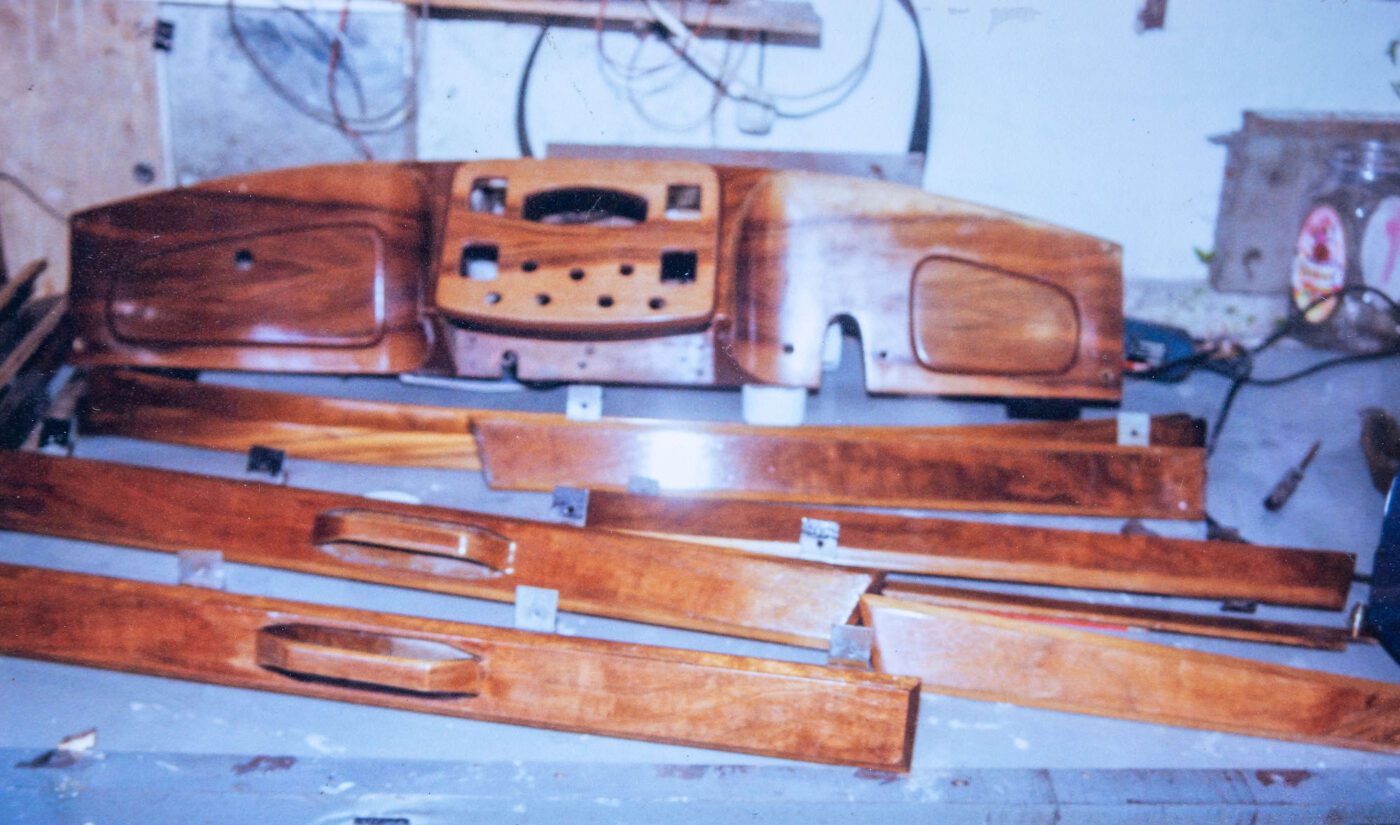
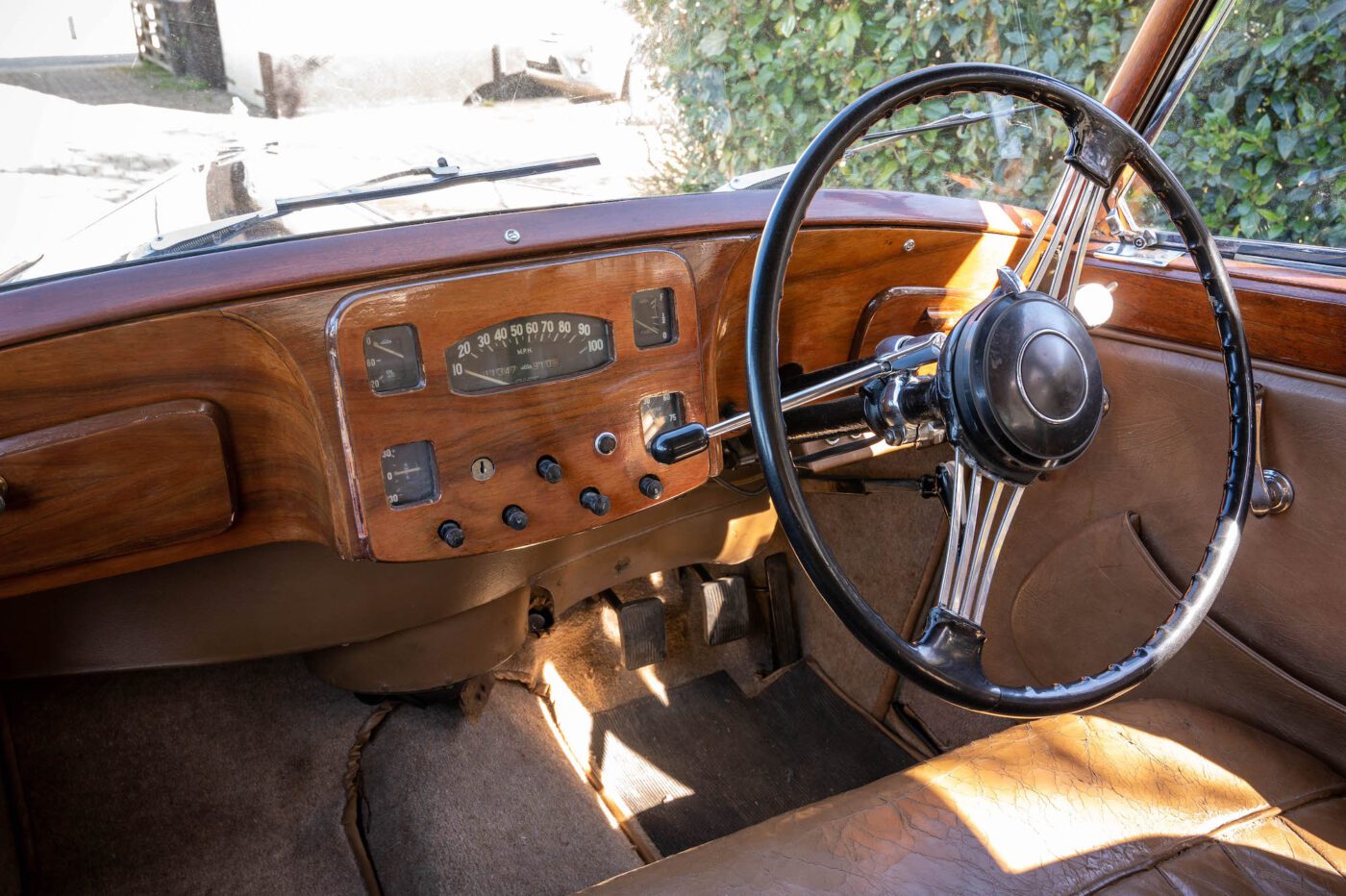
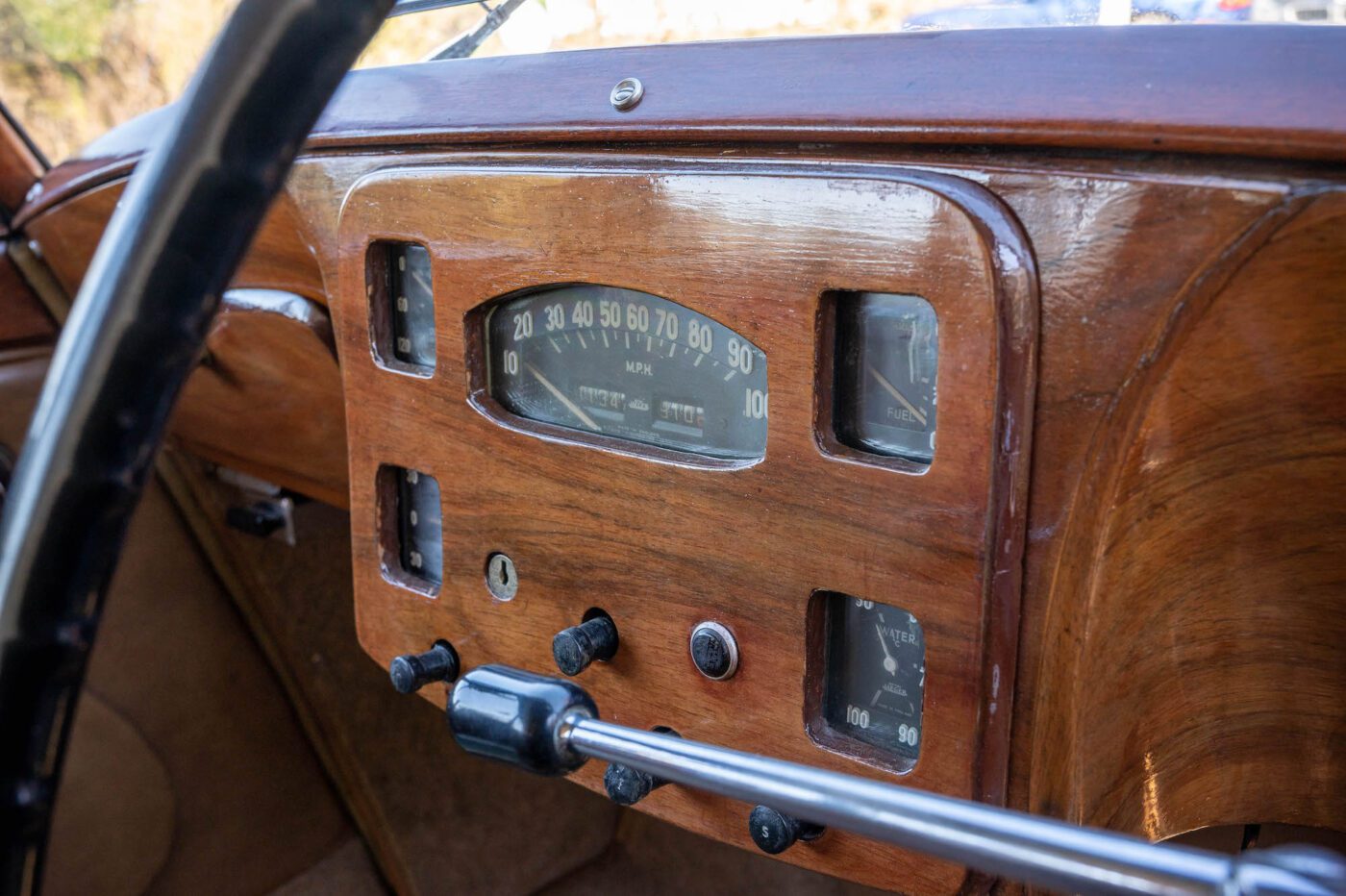
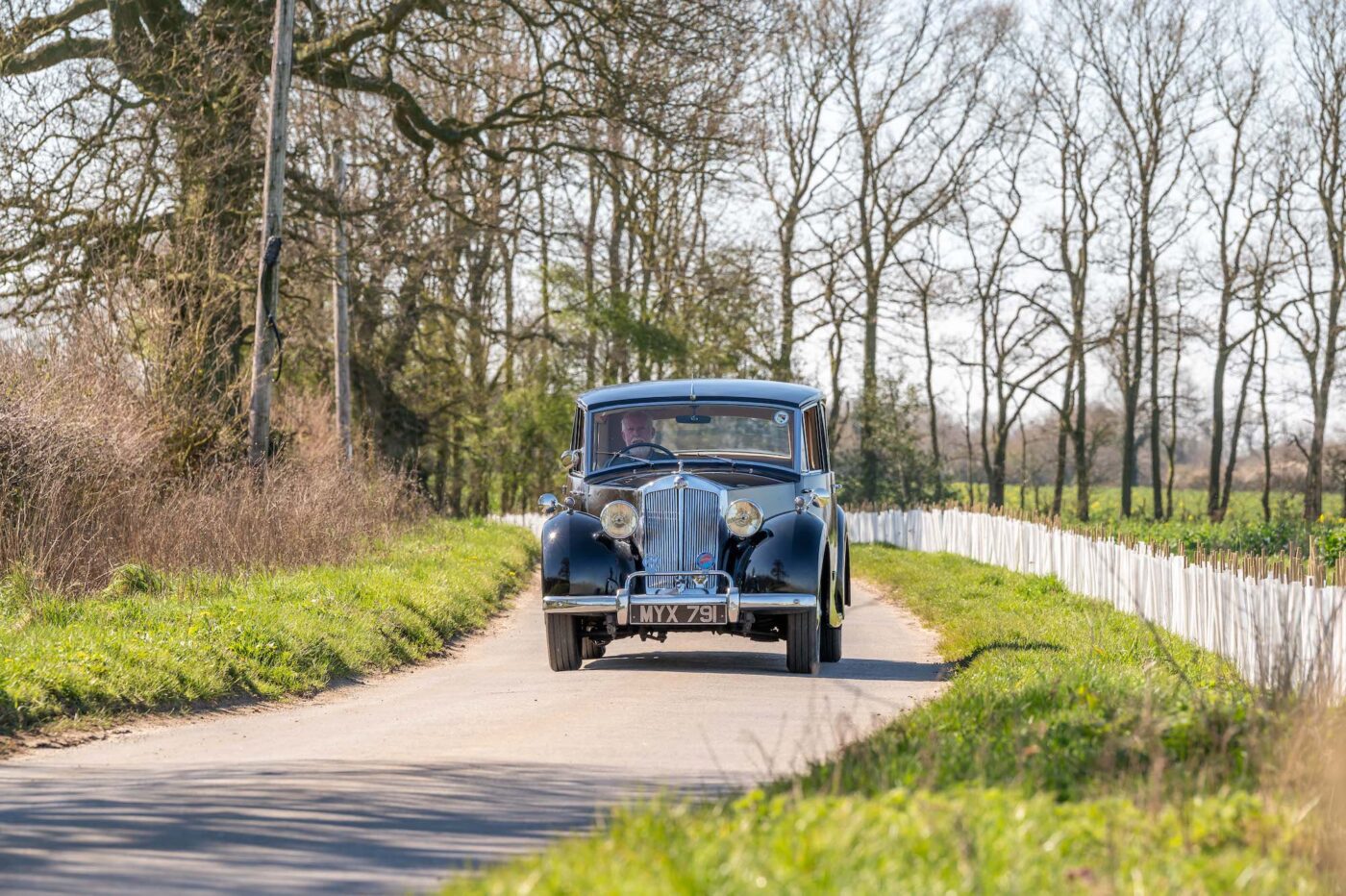
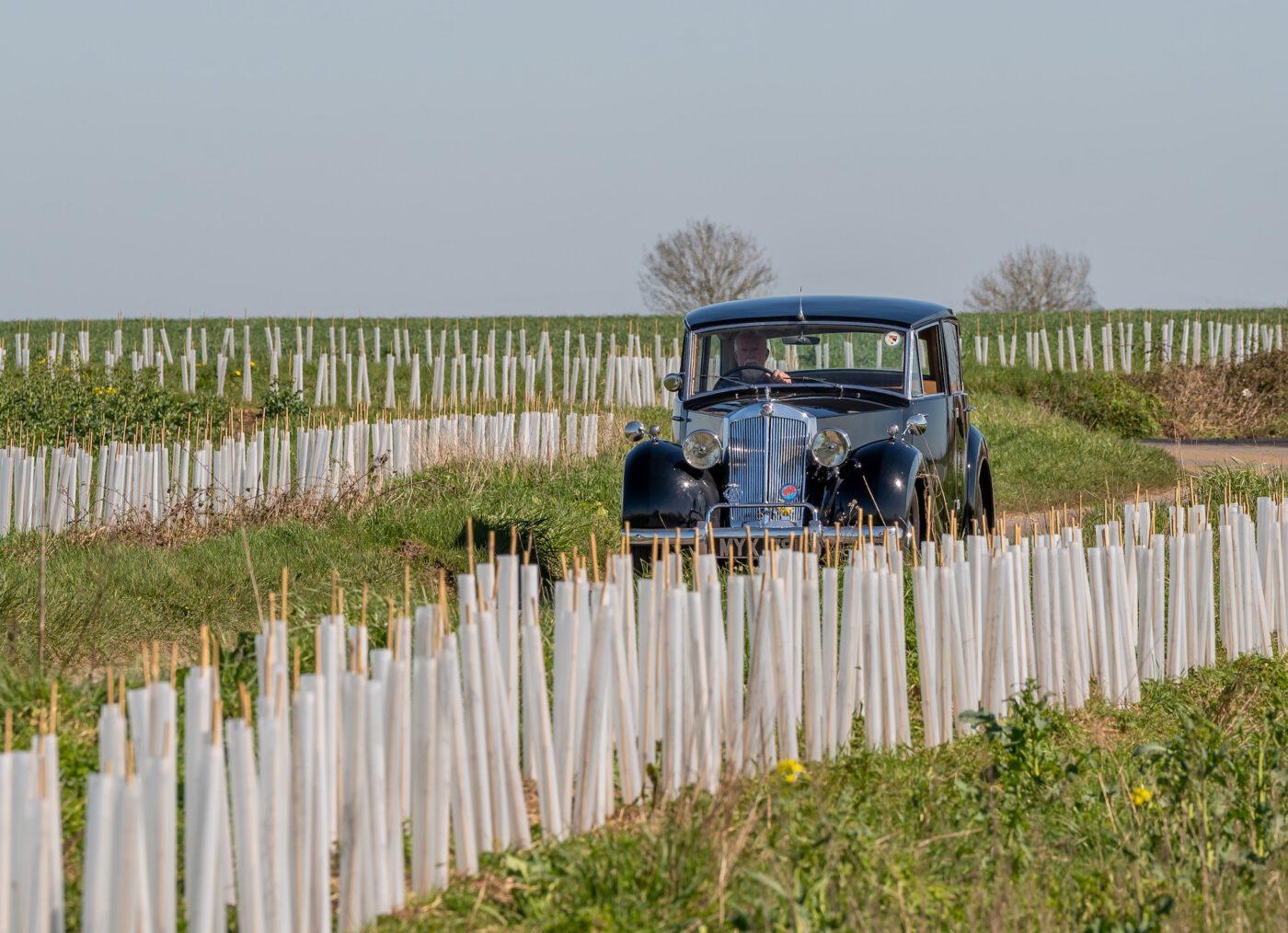
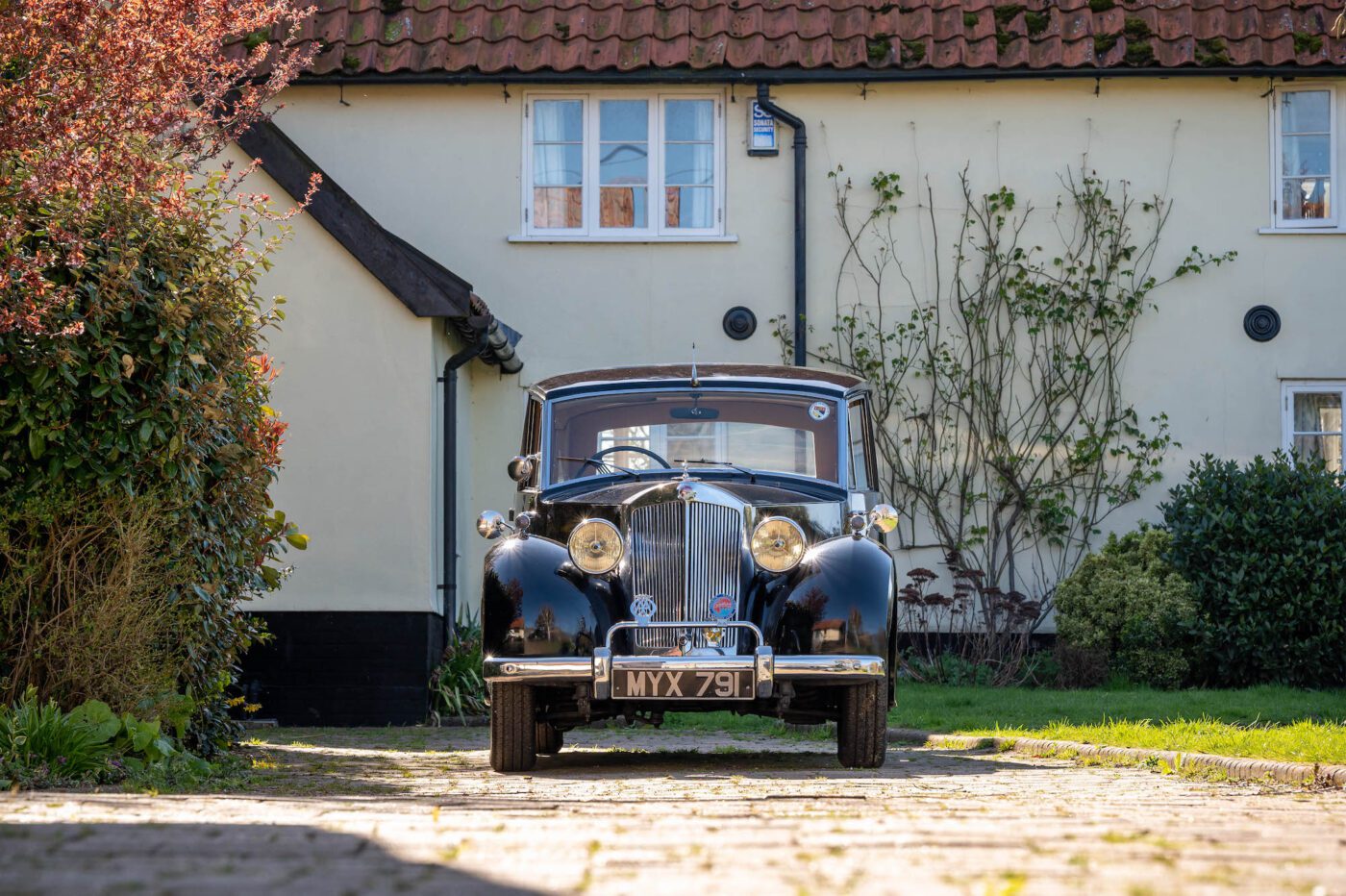
Over the years, the Triumph has been in regular use, off the road for no more than two or three years, and used for everything from shopping trips, family holidays, and taking daughters Clare and Emma to school.
“They were very embarrassed because I’d take them to school in this car and they wanted me to stop down the road and then walk,” smiles Mick.
“I remember being told off in Jewson’s yard for loading the back seat and the floor with Hepsleve pipe while I was doing the house up. I said ‘I haven’t got anything else to move it with!’
“It just wasn’t that important – the car was just used as a car. I’d go off down to Falmouth to go sailing and, although it got a lot of interest, I’d park it in the car park like any other car. I didn’t have any feelings of worry about it.”
When the children were young, Mick fitted seat belts in the rear for a bit of safety and, according to Midge, “to stop them sliding off the seat and on to the floor”.
“We’d pile loads of kids in the back and go on trips out,” she adds. “We went all the way to Yorkshire on holiday, staying somewhere overnight on the way up and then driving all around Yorkshire.”
Unfortunately, the car didn’t make the return journey under its own steam.
“I lost oil pressure suddenly, and that was it, the big end end bearing went,” says Mick. “Clare would have been seven, and we were on the back of the truck and I remember her saying ‘we’ll get there faster than if you’d have driven’. She wasn’t wrong.”
Another trip to Yorkshire, in 1992 or 1993, was interrupted by a humanitarian mission.
Mick drove the family in the Renown up to Yorkshire, left them there and headed back south to Nottingham, where he had been asked by the AA to attend a last-minute selection course to support a classic car rally to Chernobyl.
“When I got there, they said ‘there’s another reason for being here – we’ve had a request from a police force in Warsaw who are going to Bosnia with an aid convoy’,” he remembers.
“So I got selected to go there to support the lorries on the convoy, off we went, me and another guy in a Granada.”
After an 11-day journey, he picked up the Triumph and headed back to Yorkshire to carry on the holiday with Midge and the children, who had been getting about on buses in the meantime.
The Triumph has been used for half a dozen weddings over the years, though never as a business, with Emma’s the most recent in 2019.
“The girls are not that keen on her, but they wanted to use her for the wedding and that was lovely,” says Mick. “Emma wanted her, whether that was as much to please me I don’t know – and it was free!”
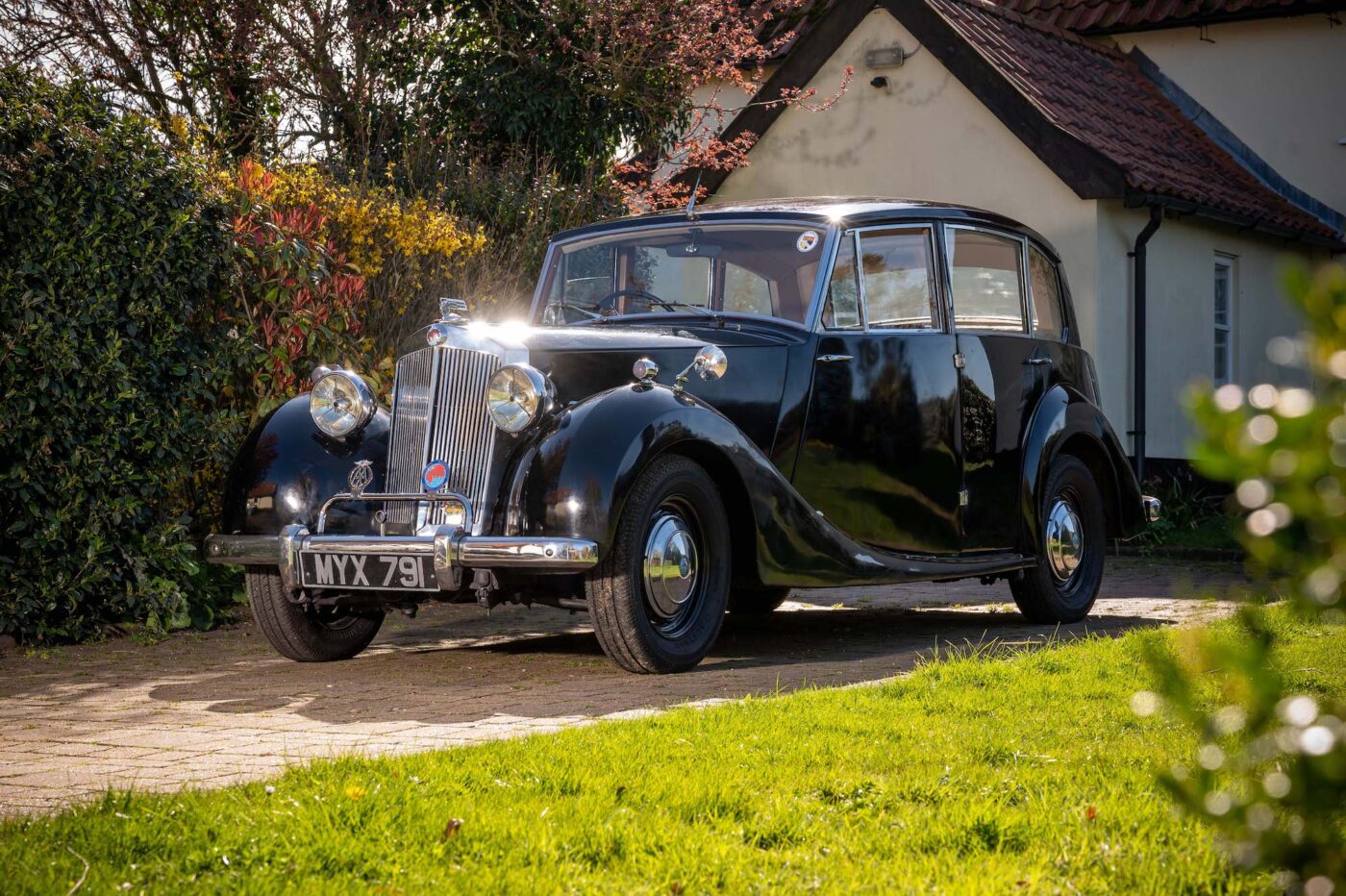
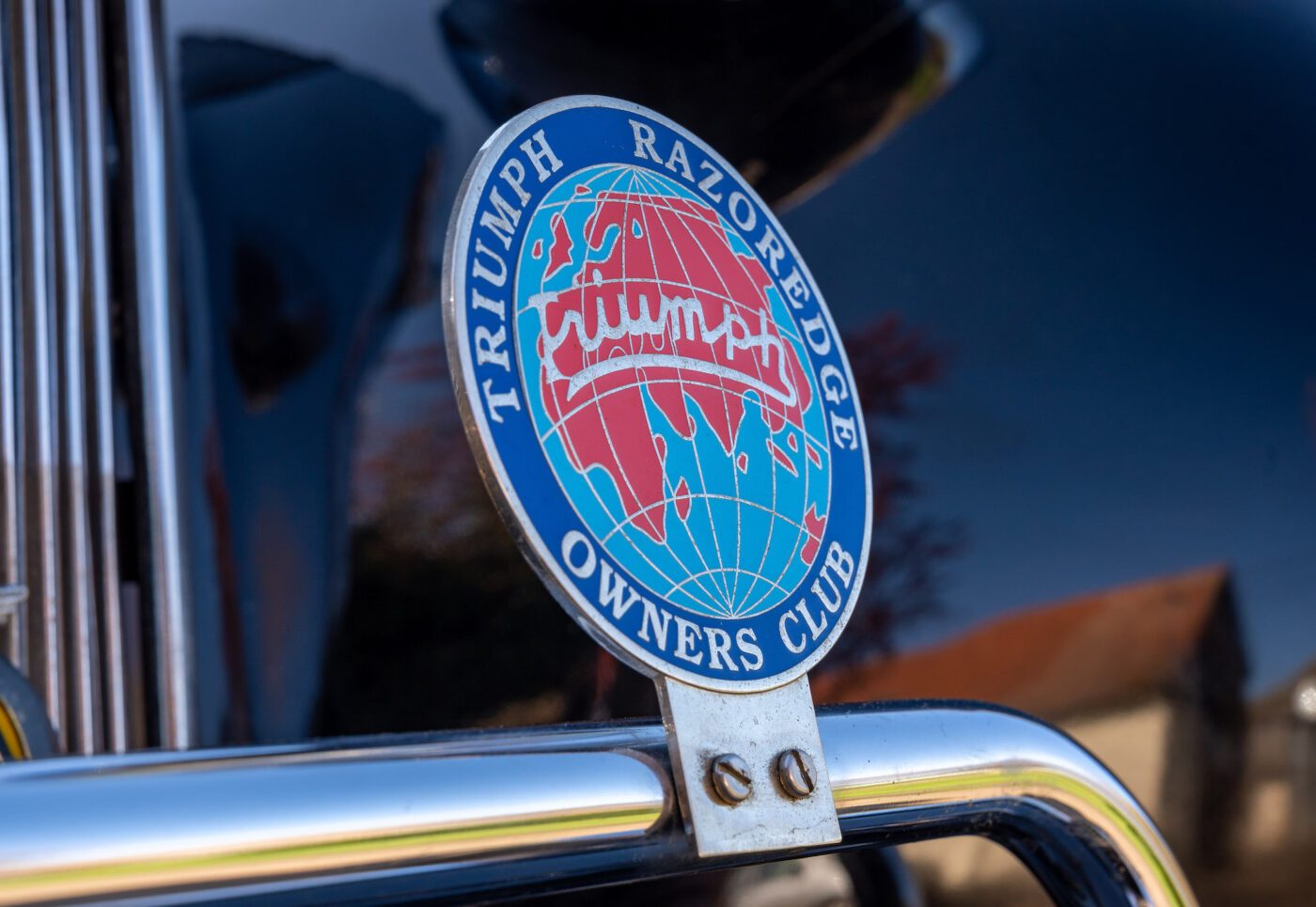
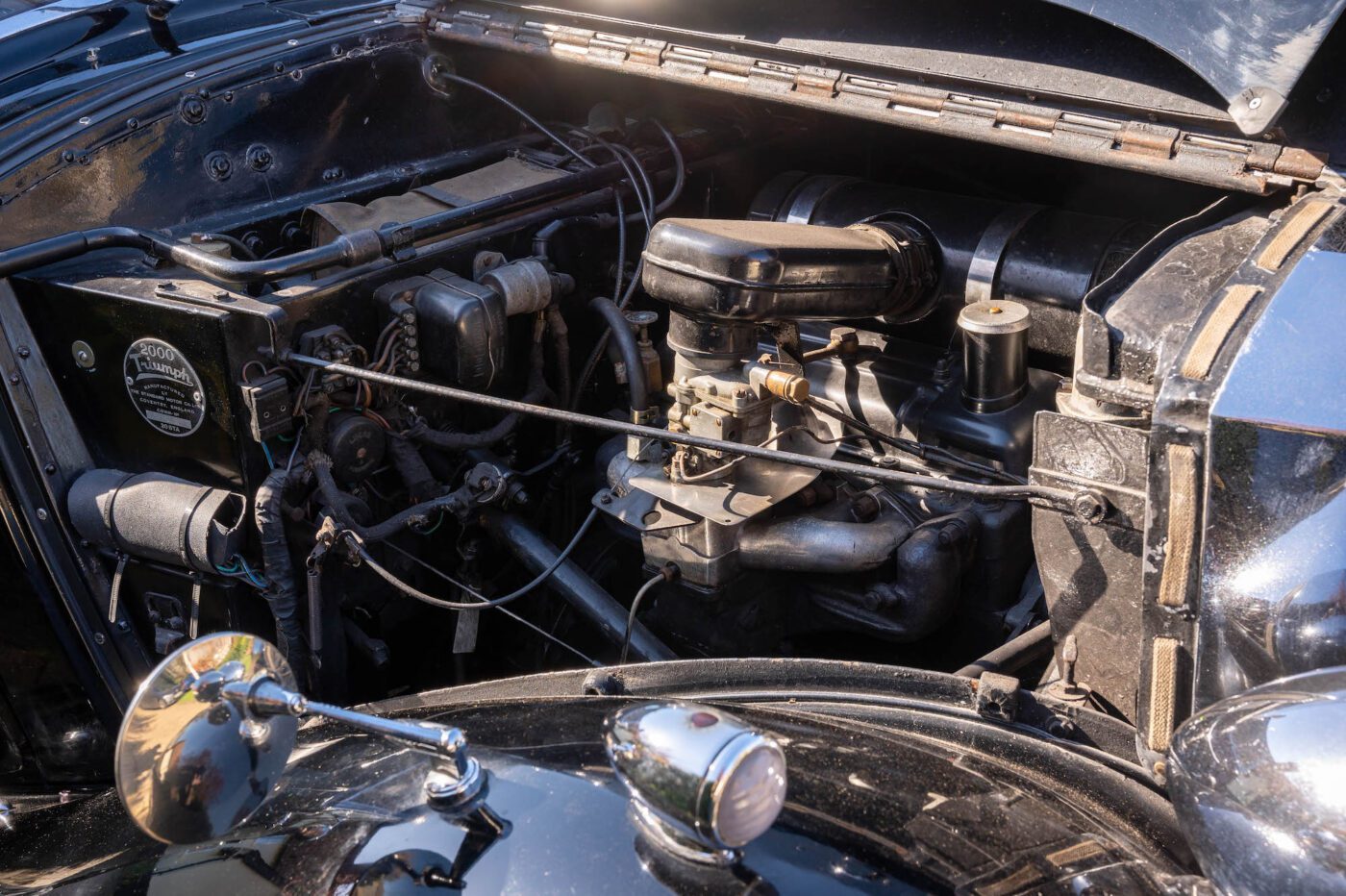
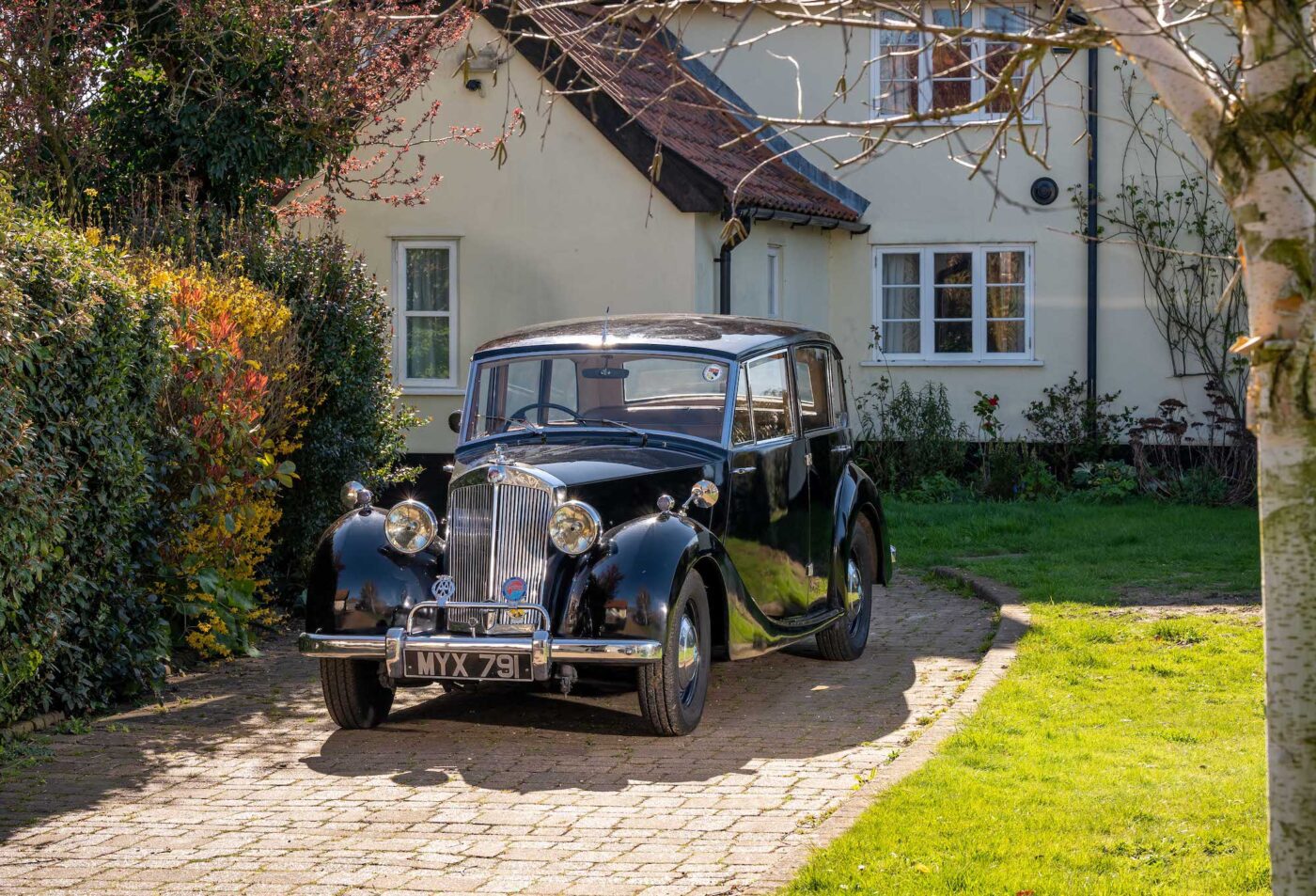
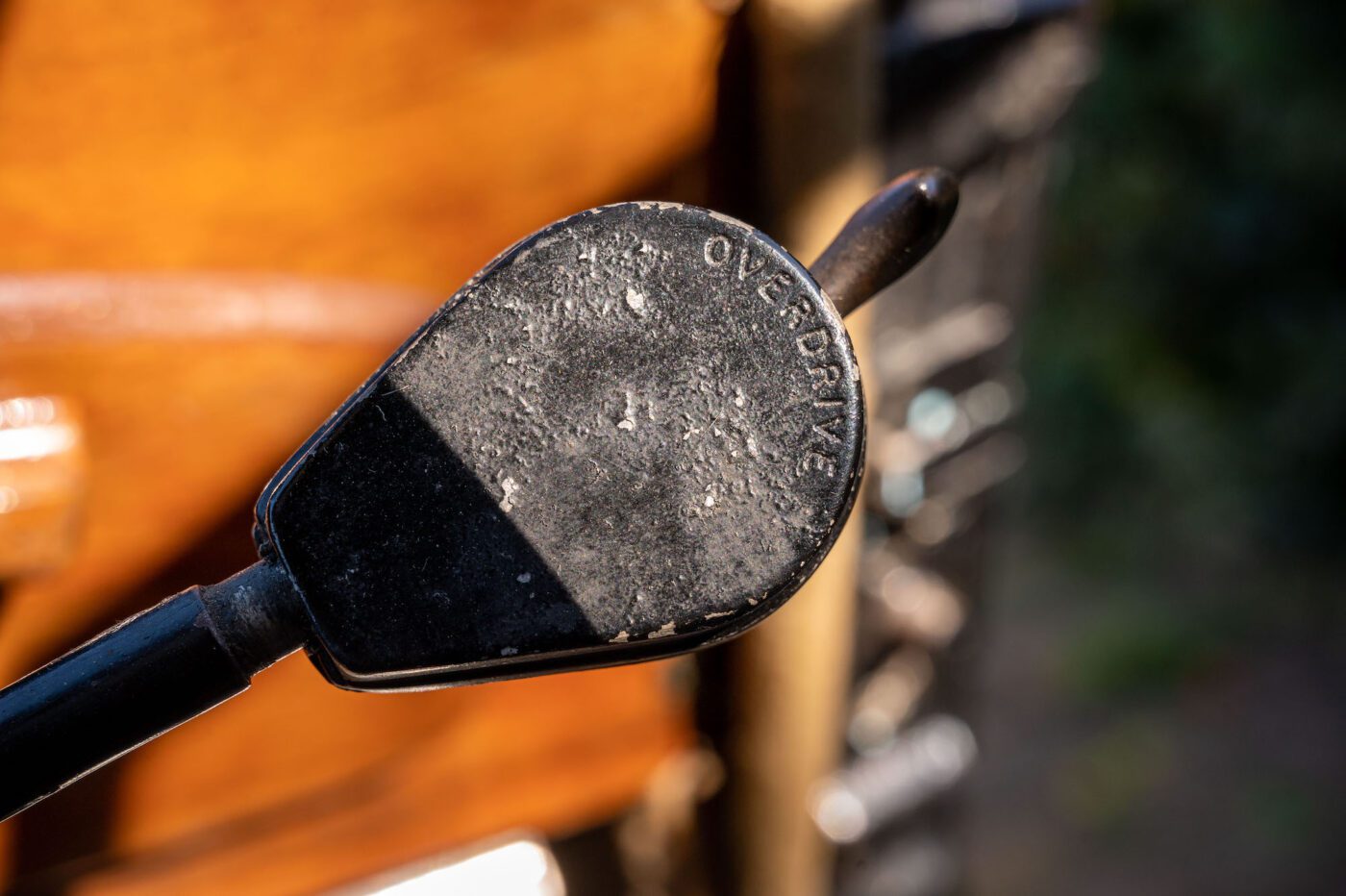
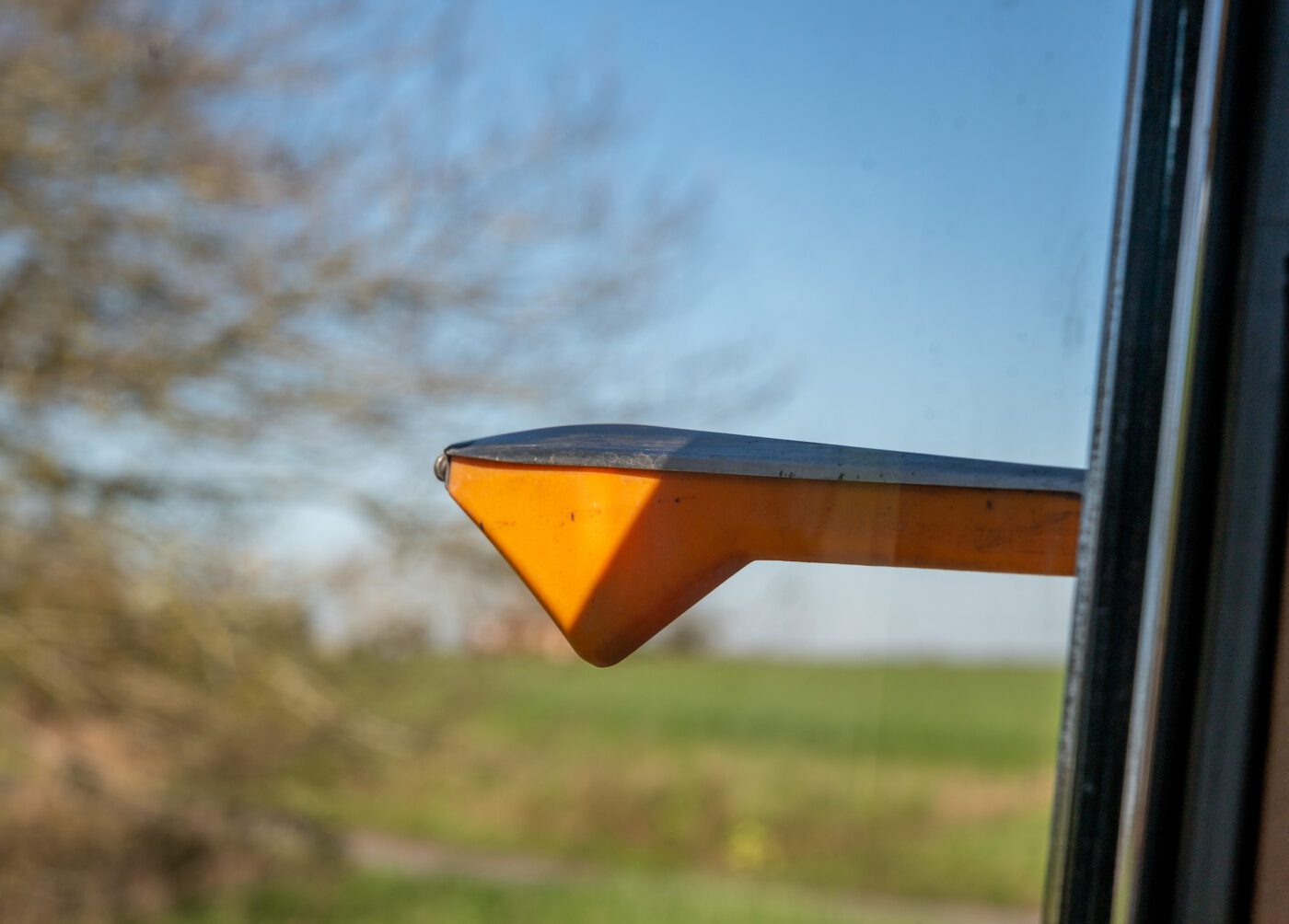
“Our kids are very safety conscious with cars, so although they used to ride in it when they were young, they don’t want their kids out in it,” says Midge, “because, compared with modern cars, they’re not safe in this car.”
“Our grandson, Theo, who’s four, was sitting in the driver’s seat of the car this week with his AA hat on,” adds Mick. “He likes to play taxis – I have to climb in the back and tell him where I want to go. I hope he’ll be interested – he may inherit her…”
The old Triumph is still driven regularly, and Mick added a servo to the drums brakes a couple of years ago to make life easier for Midge in particular.
“I was having a bit of trouble, having to almost stand on the brakes,” she says. “Modern cars have all got ABS and all that and they stop dead, and she does not stop dead. So it’s helped me a great deal.”
Mick has always carried out any work on the car himself.
“I don’t see the point in giving it to somebody else to repair,” he says. “It’s always me, and I’ve had to learn a lot of things. It’s a hobby at the end of the day.
“She’s part of the family and at every stage of your life, it means something. You look back and it reminds you of the things you did and the money you spent that you didn’t have!
“She’s never going to be worth a lot of money, but it’s not about that. I love driving it.”
And that, adds Midge, is the whole point.
“It’s not a museum piece – what’s the point in having a car that’s not used?”



